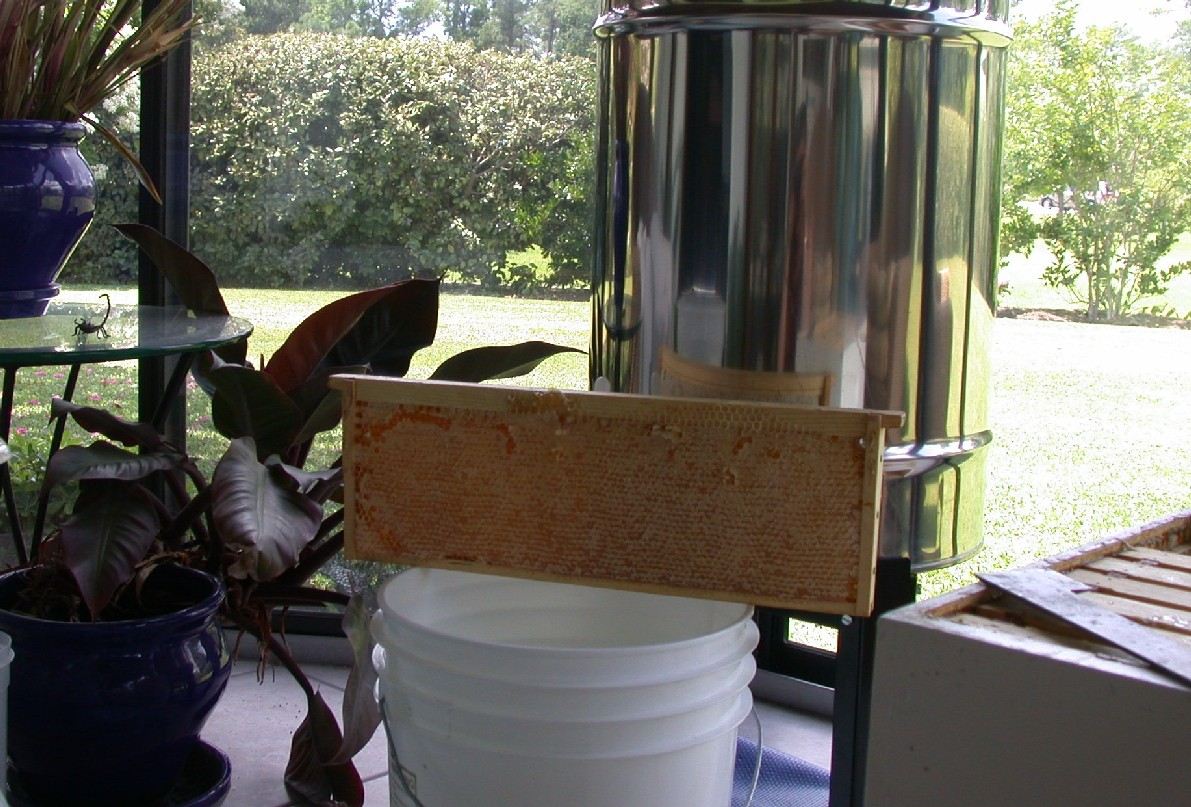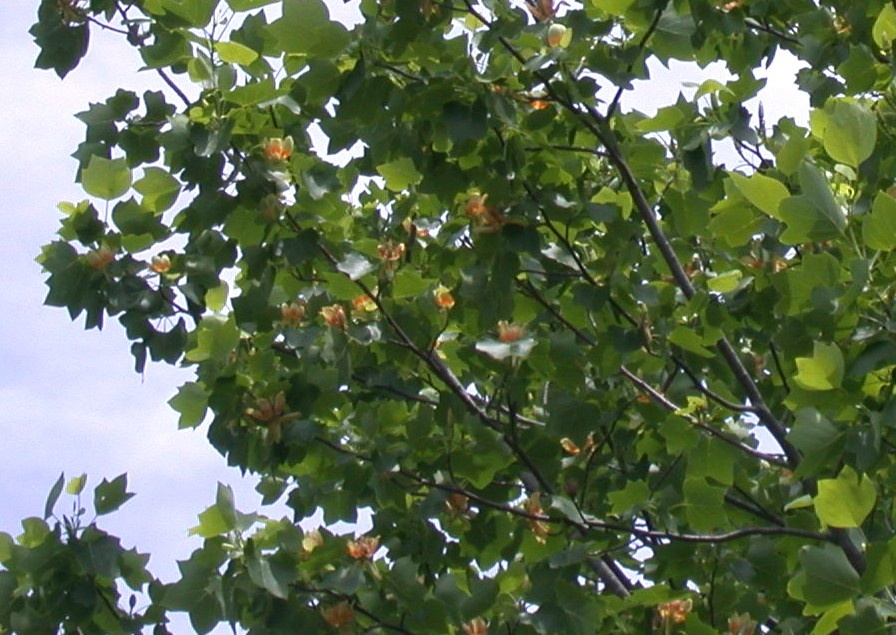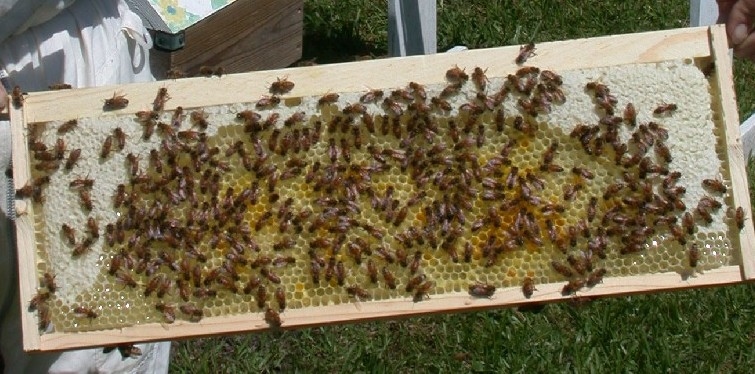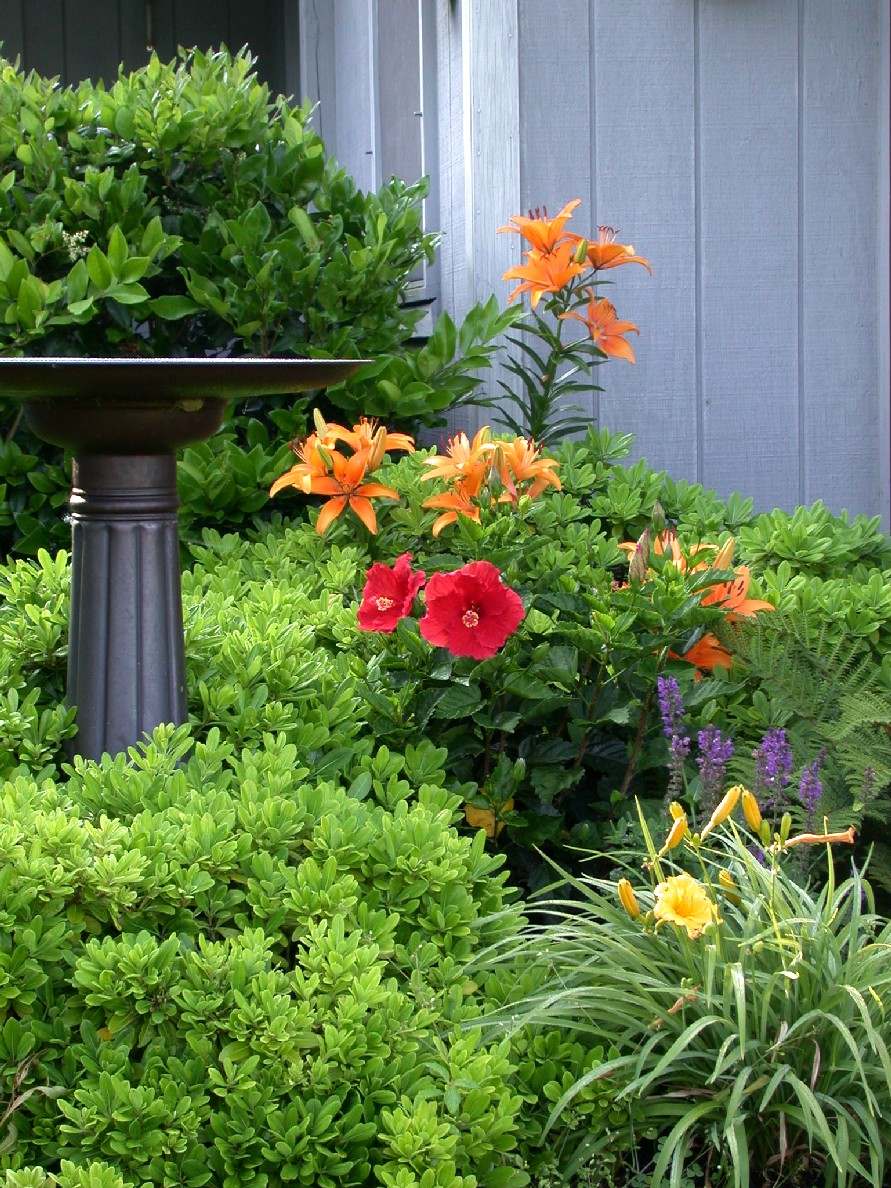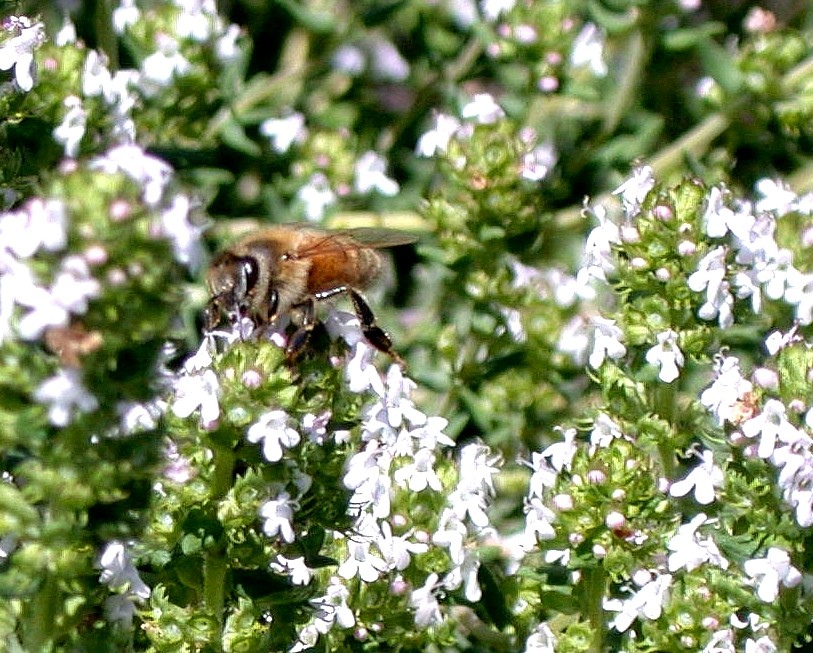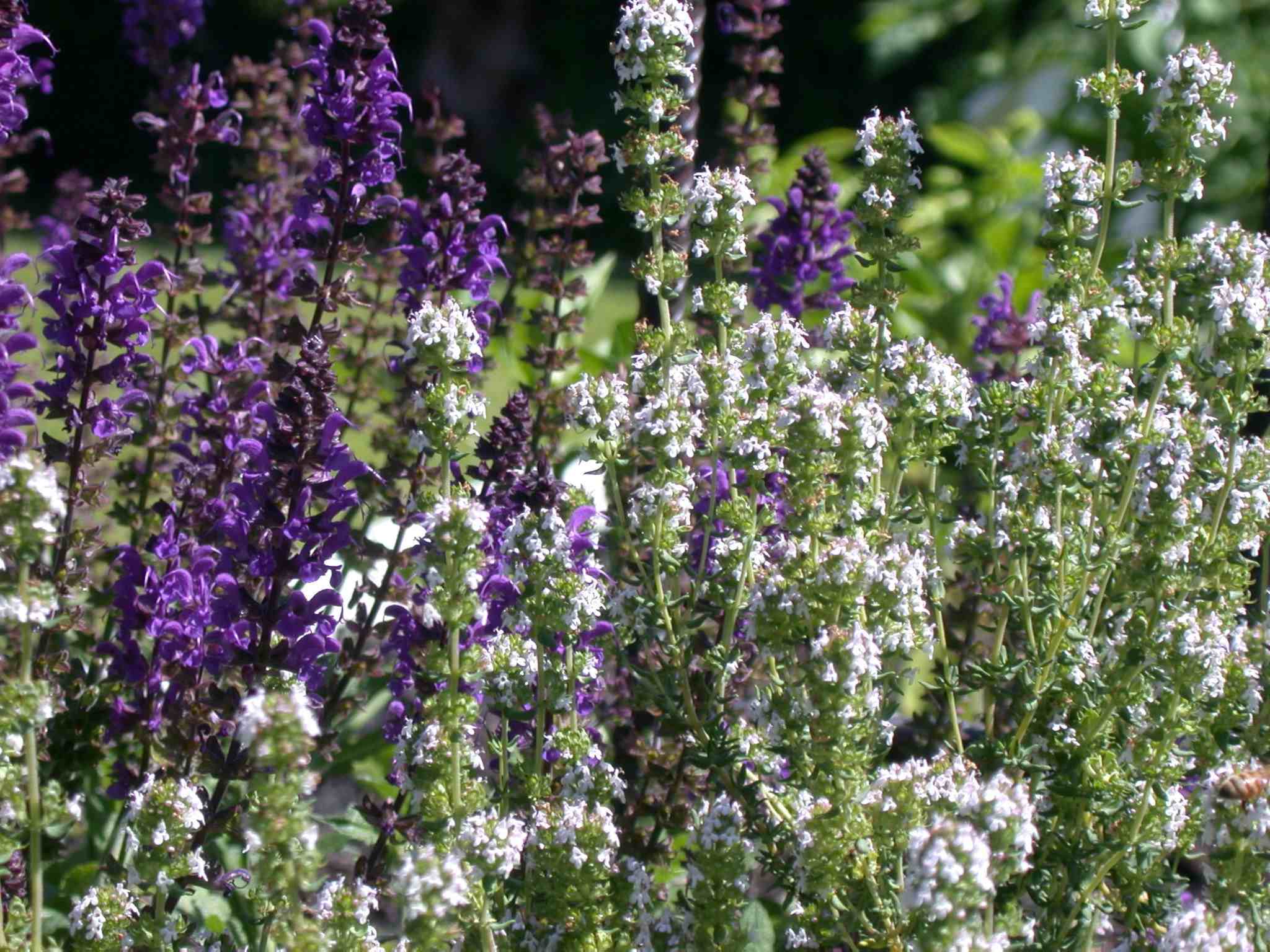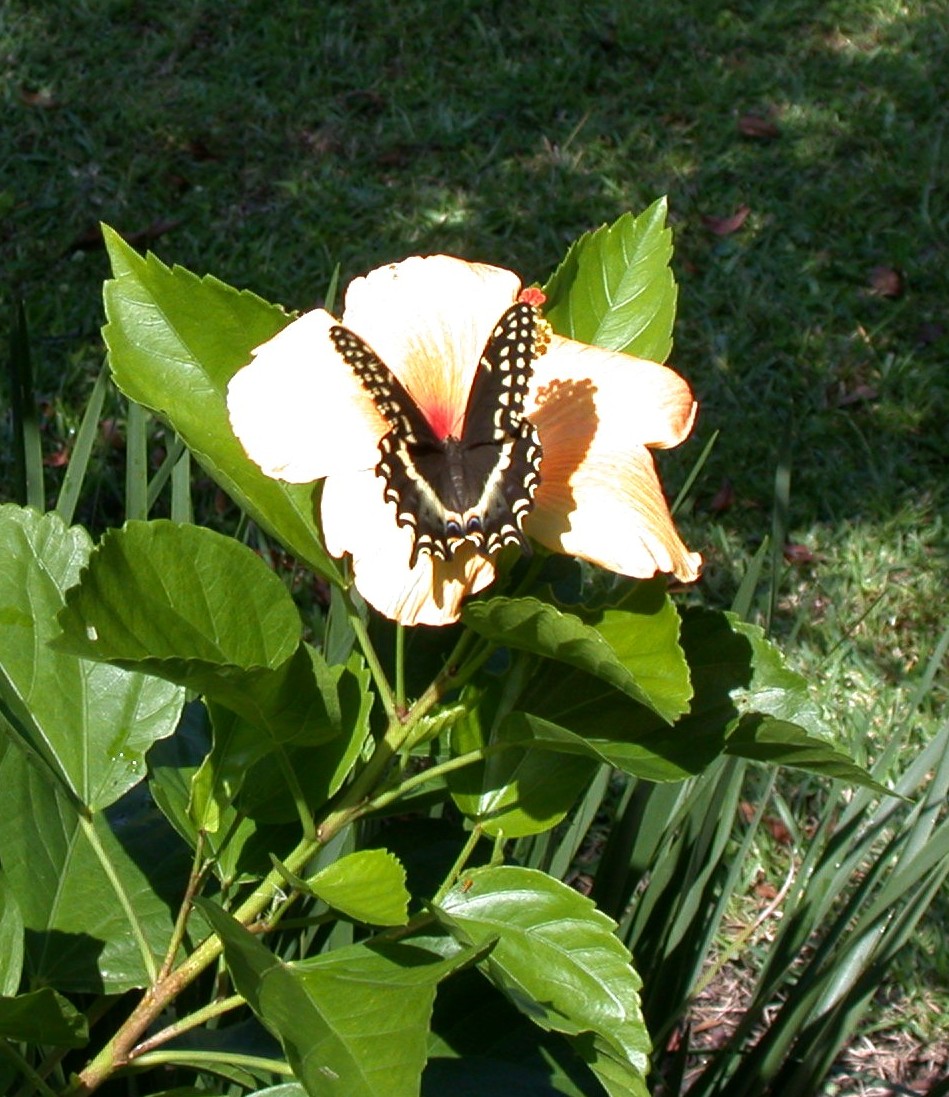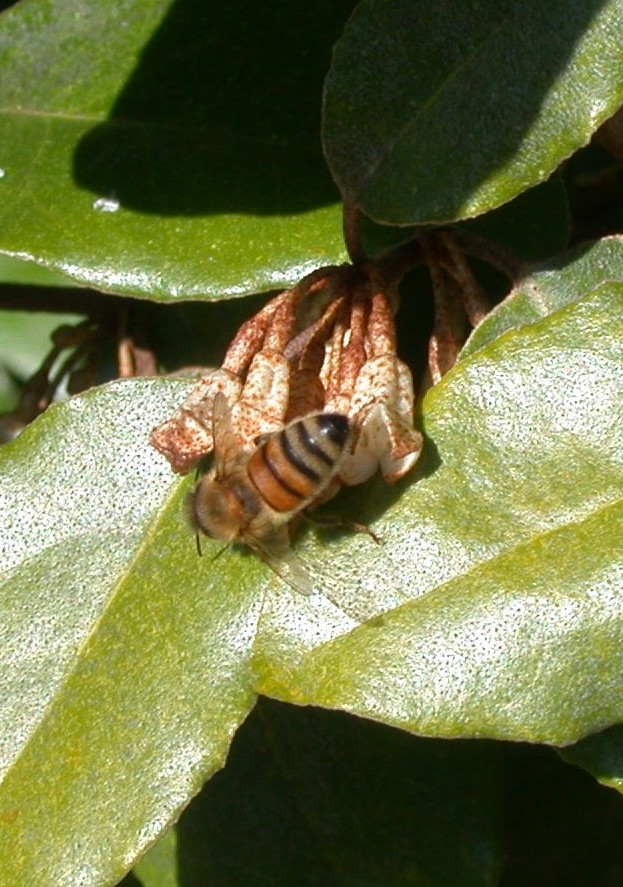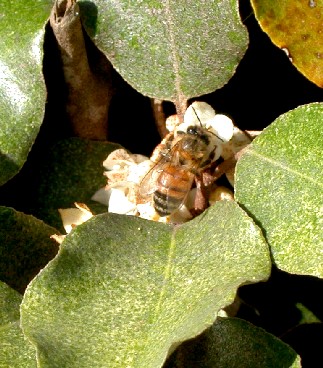|
Welcome to our
Honeybee photo page. Please
scroll down for photos from our Honeybee Garden and 'Yarden' as we have
planted our property with trees and shrubs to provide honeybee
forage. For photos focusing on the Organic Amazonian Dark
Earth - Terra Preta Vegetables, click on the 'Garden' button on
the left.
|
|
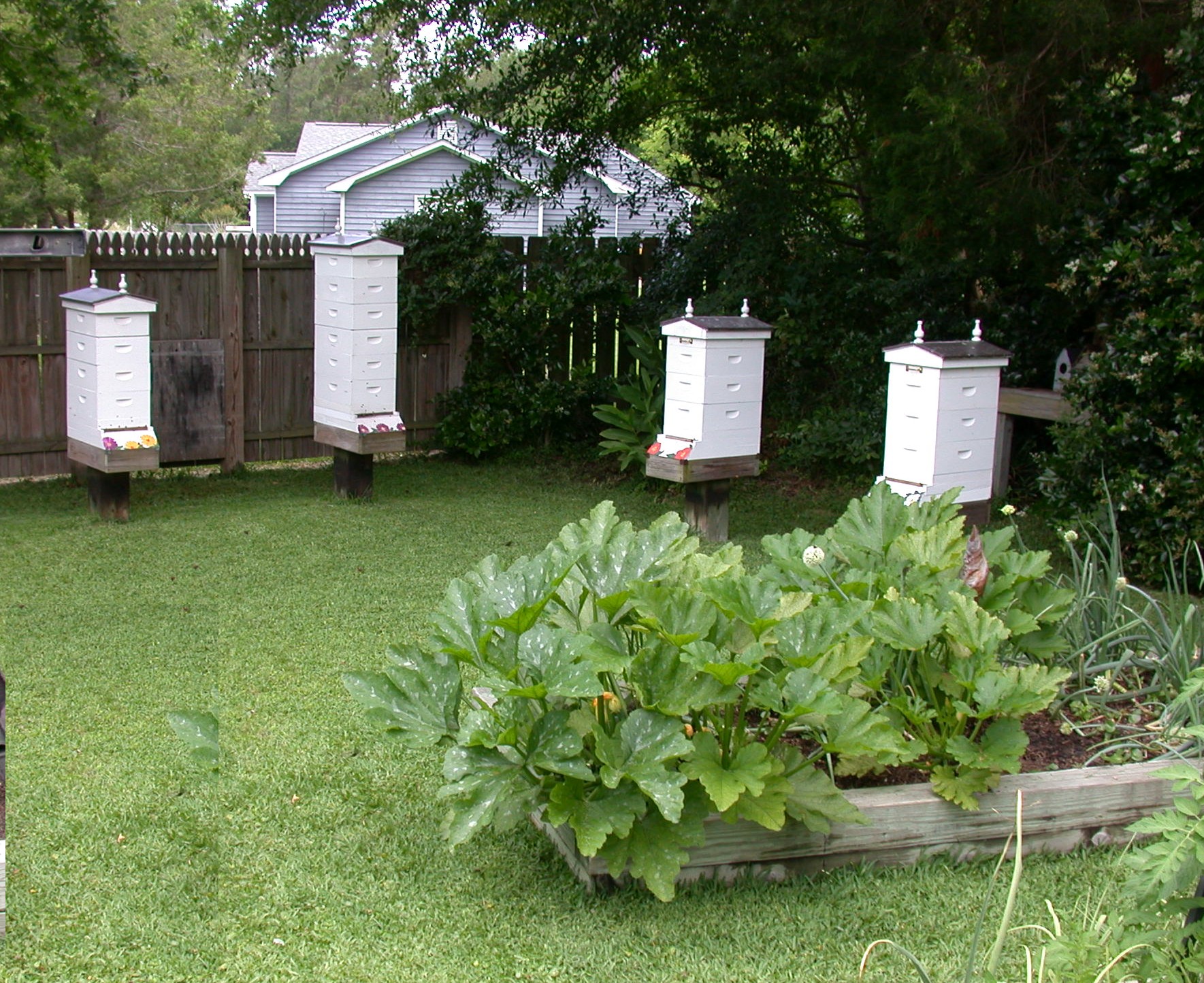
|
|
Above, the colonies. Victoria, Francesca,
Celeste and Elanor in May 2012. Francesca is a Carniolan Queen
from California, installed 2011. Victoria and Celeste are Italian
Queens from Georgia, installed 2012 and Elanor is a Cordovan Italian
Queen, installed 2012. The Cordovans are golden and absolutely gorgeous.
The California packages, obtained from Koehnen & Sons, arrive
overnight UPS, with almost no loss whatsoever. There were perhaps
20 dead bees. It is expensive, but worth the cost for gentle bees
and genetic diversity. Photo DML 05/20/12 |
|

|
| Above, the
customized Freeman Small Hive Beetle Trap for 8 frame equipment,
wedded to an altered Brushy Mountain 8 Frame Hive stand, in order
to fit into our particular set-up. The Small Hive Beetle is
here, and shows no sign of leaving. One colony, Elanor,
appeared to be most bothered by them and I installed a Hood trap,
while waiting for the Freeman trap to arrive. The Hood trap
has two disadvantages. First, one must disturb the colony to
maintain and check the trap, Second and most critically, the bees
immediately began to propolize the trap entrance, making it
useless. The Freeman trap, on the other hand, is
maintained from outside the colony by pulling out the tray.
I am using soapy water laced with apple cider vinegar.
Despite heat indices at 108�F, the bees seem to be fine with a
closed bottom, perhaps that is due to the shade they enjoy all
afternoon. I am happy to report that both beetle and larvae
have perished in the trap, victims of the soapy soup. All
colonies will be sporting these as de rigueur equipment. Click
Here for the step by step Freeman SHB trap customizing and
installation photos. Photo 06/30/12
dml |
|

|
|
The colonies from left to right: Queen
Victoria, Queen Francesca, Queen Celeste and Queen Latifa
photo DML 2007 |
|

|
|
Above, the colonies. with three supers each, April,
2009 photo DML
|
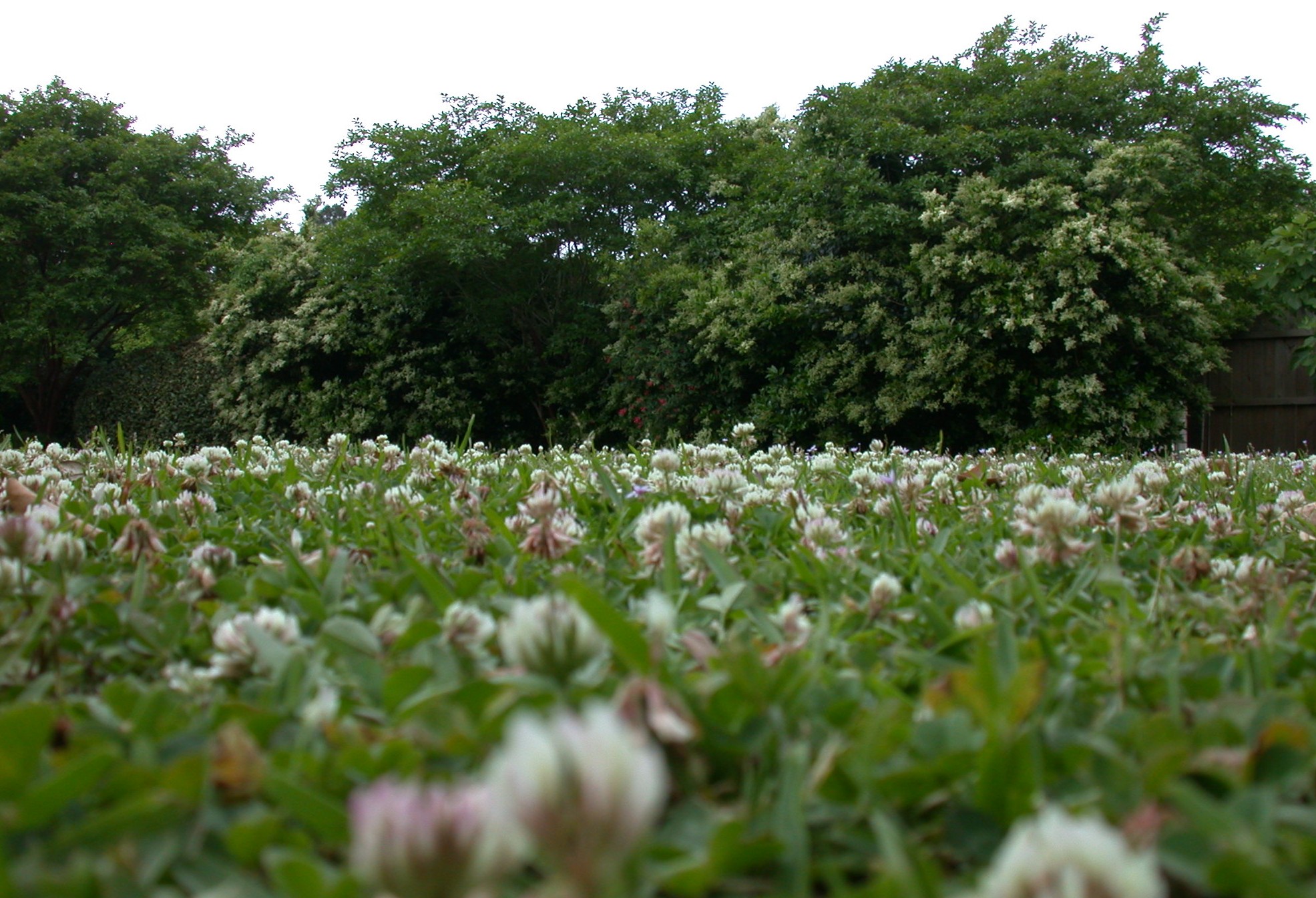
|
|
Above, clover blossoms with sweet
nectar. This is a wetter spring than last year and we hope the
nectars are more abundant. The drought last year had a negative
impact on honey and bees. The honeybees are not the only lovers of
clover...see below. Photo 04/29/12 DML |
|
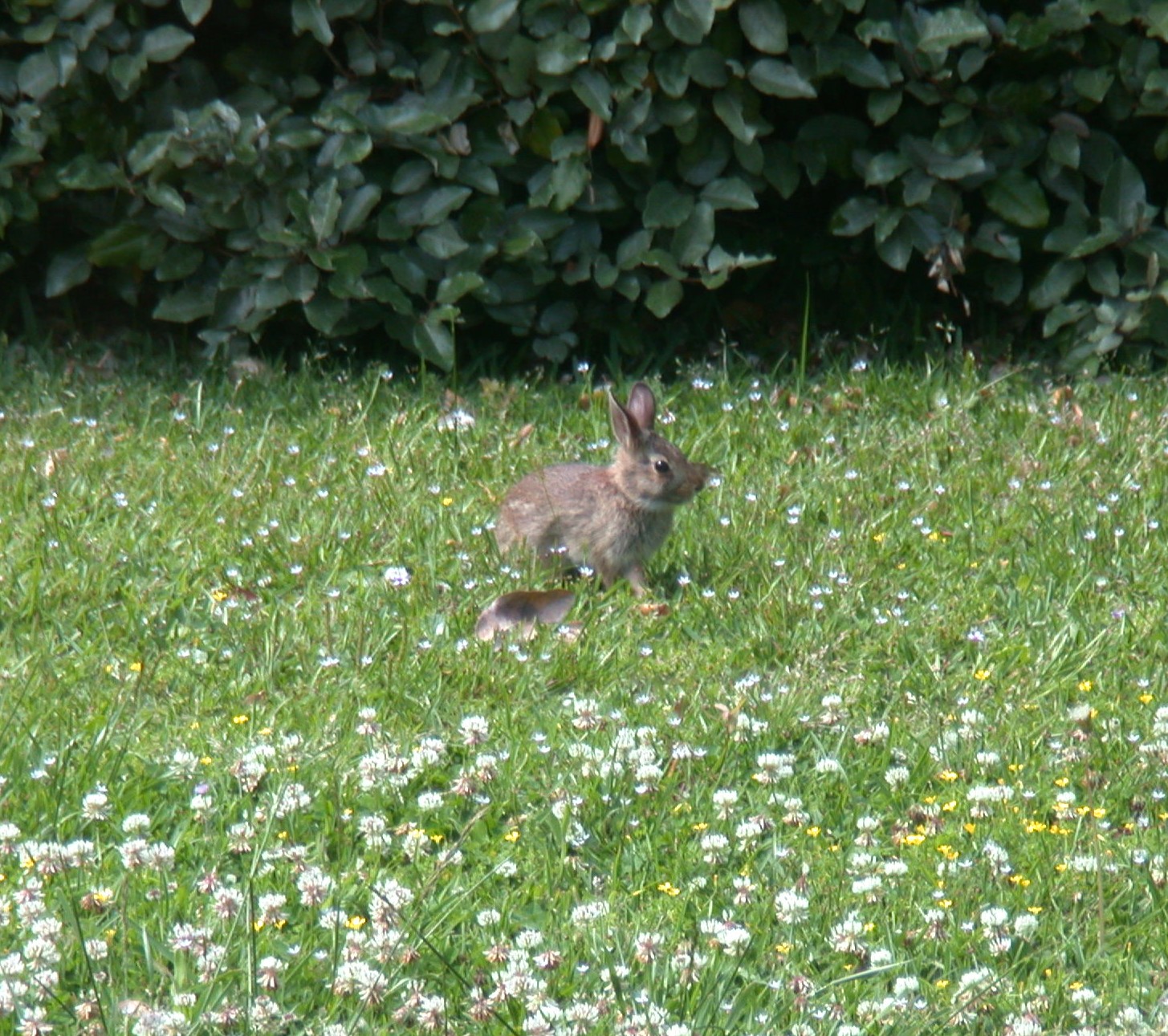
|
| Above, a
young bunny munches clover blossoms, we assume he brushes the
honeybees off with his whiskers. Photo
04/30/12 HEL |
|
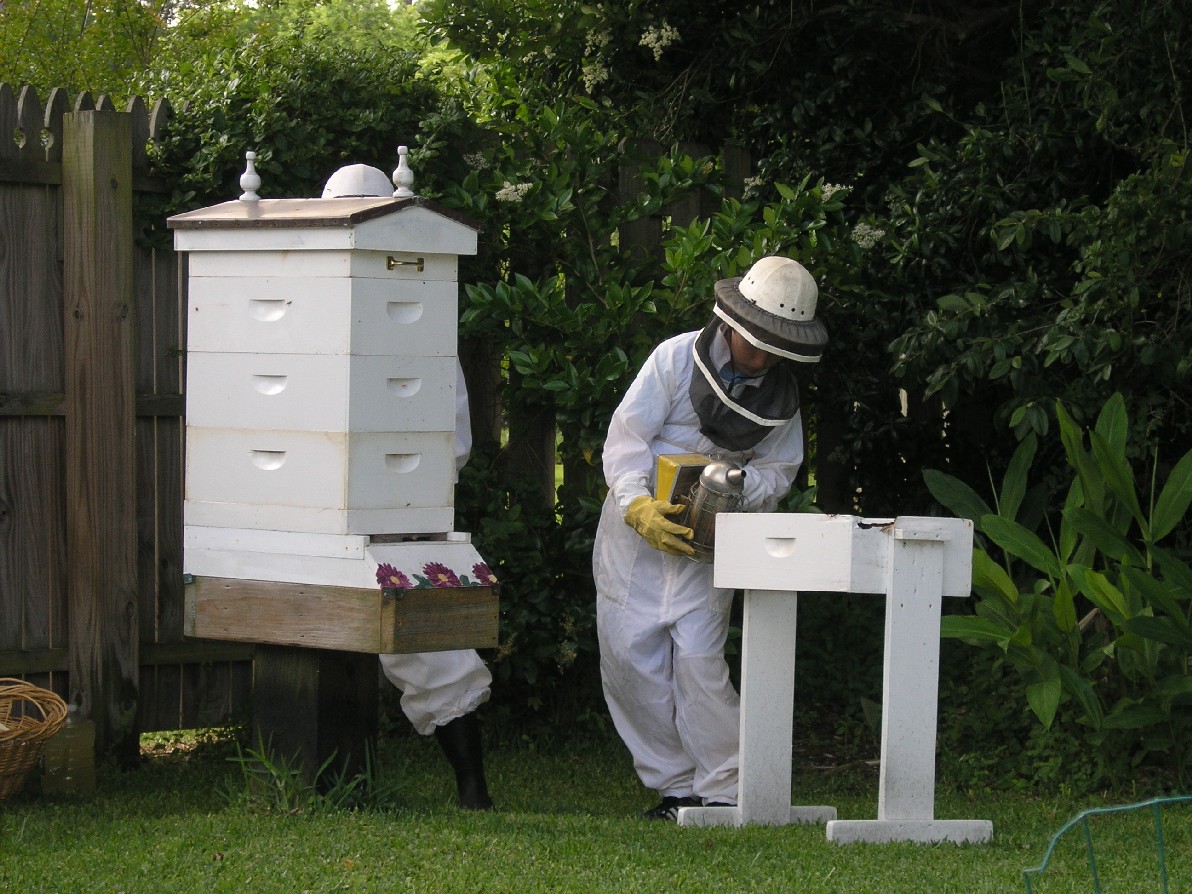
|
|
Above, Lucas, age 12, places the smoker on
the work stand. Lucas is interested in becoming a beekeeper, and
this is his first visit to a beeyard. Our photographer, Lucas's
mom, Norma Jean is a Kindergarten teacher. She has invited me
several times to give a program on Honey Bees and beekeeping to her
class, which is always a pleasure. photos, Norma Jean,
June 2011 |
|
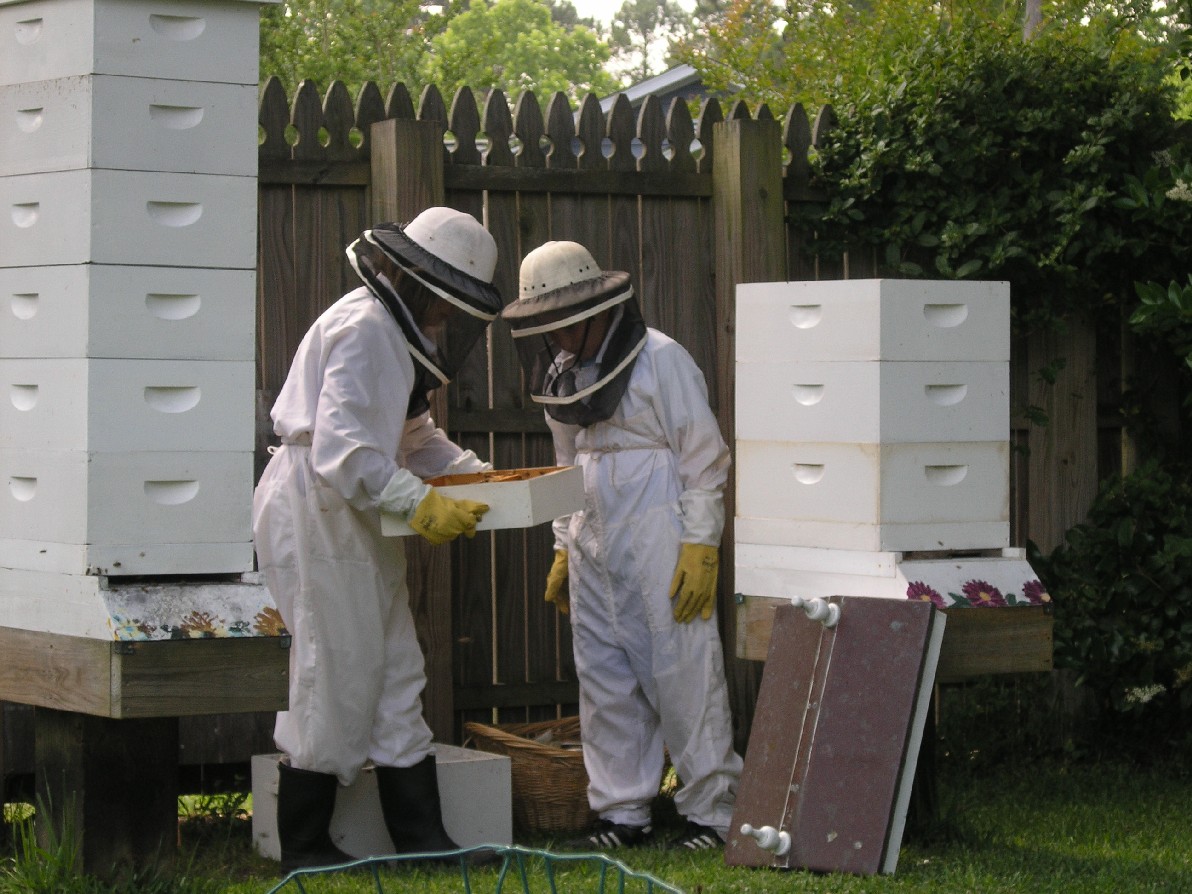
|
|
Above, we take a look in the Hive Top
Feeder. This is a new colony of Carniolan bees from Northern
California. I show Lucas the honeycomb 'ladder' the bees have
built to travel to and from the feeder. June 2011 |
|
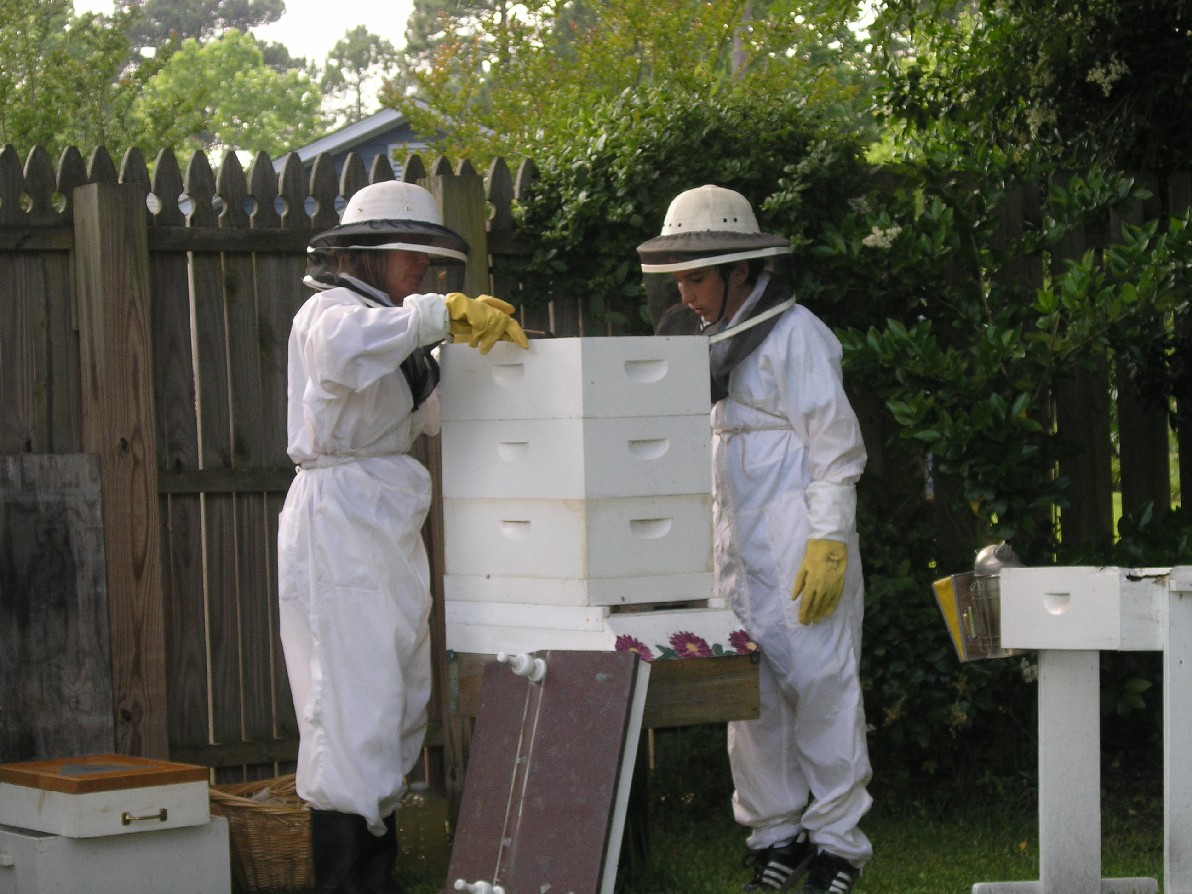
|
|
Above, Lucas, at
right, and I examine the progress of comb building, checking to
see how many frames have been pulled out. These girls still have a
bit of building to do, so the feeder will go back on. June 2011 |
|

|
|
Above, looking toward
the garden and Beeyard, which lie behind the Elaeagnus hedge. photo
DML Below, the same view dressed for winter. |
|
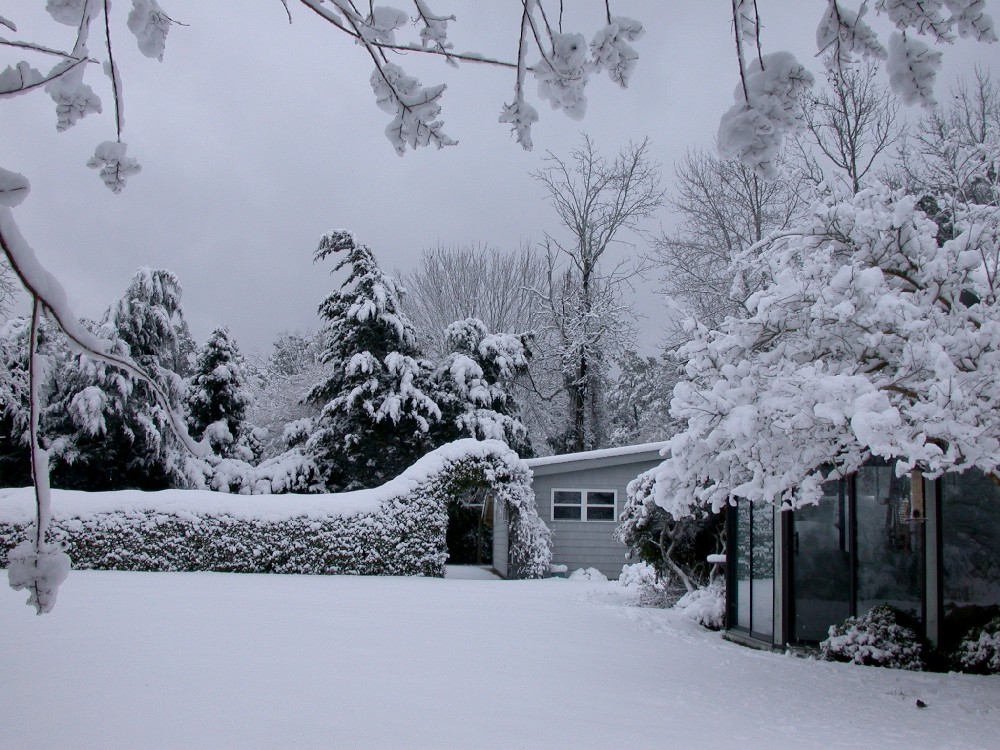
|
|
Above, same view of
the hedge, following a snowfall,
8 inches overnight February 12, 2010 photo
HEL |
|

|
|
Above, Poppies and Thyme in the
garden. photo DML 2011
|
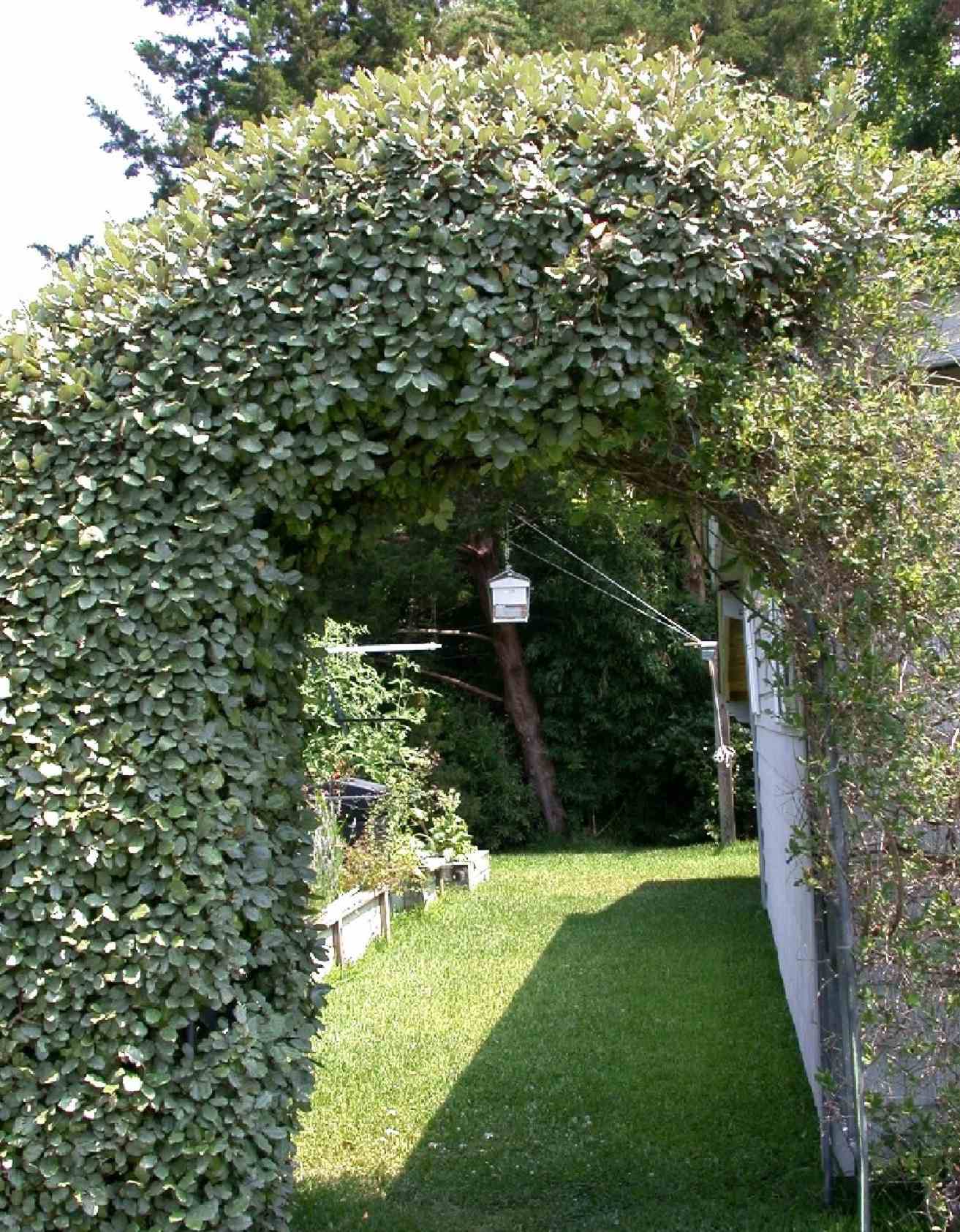
|
|
, Above. our
experiment for March 2010. My article on this Swarm trap
experiment appeared in the June 2011 issue of Bee Culture
Magazine.
I do
not practice 'swarm prevention'. I believe swarming is a
natural and necessary function of healthy hives and happier quality
queens. It is also important for species survival and promotes
genetic diversity and development of natural resistance to the many
pests that now plague the honeybee. Over the years we have
captured over six of our own swarms, and found great homes for them.
At least that many got away. This is my contribution to the
restoration of a severely depleted feral honey bee population. I
also consider swarming an integral part of my Integrated Pest
Management Program, brood cycle interruption, therefore Varroa brood
cycle interruption.
The Swarm Trap Hive hangs
invitingly, ten feet up an aromatic Cedar Tree, facing due South,
complete with a pheromone lure that mimics the scent of a jubilant
scout bee who has just found the perfect home for her swarm. March
23,2010. photo DML |
|
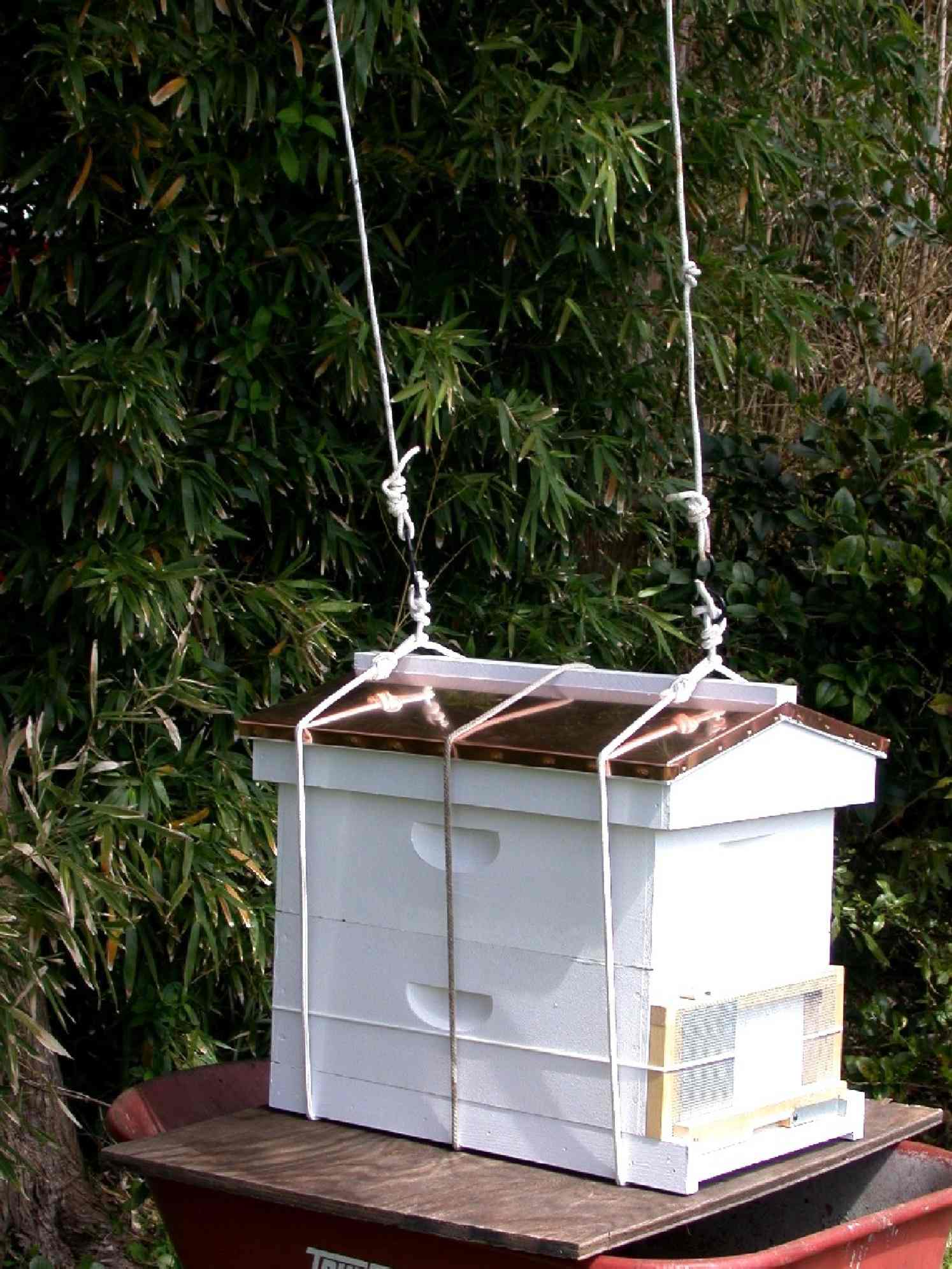
|
|
, Above. the swarm
trap hive poised to hoist. It is a complete hive, from the
screened bottom board, two hive bodies with frames, pheromone lure, inner cover, peaked copper roof and a robbing
screen. The plan: a swarm will inhabit this
hive, happy to have found such lovely digs. We then close
the door at night, and in the morning lower the hive and place
upon a waiting hive stand. Perfect. One small
issue....no swarms this year. Instead, a record amount of
bearding (see photos that follow) was experienced, both in
my apiary and others. Well...maybe next year...We are
ready! March 23, 2010. photo DML |
|

|
|
, From left to right,
Victoria and Francesca, are settling in for a night under the
stars. As you can see, the population is booming. On
the next photo, below, Francesca is bearding above the queen
excluder! June 6 2010 photo DML |
|

|
|
Francesca seen
above, is celebrating her sixth summer with
no losses!! This is especially important as she has survived
with no miticides or pesticides, ever. She has also had no supplemental
feeding since the winter of 2006-2007 when I implemented a
management practice of leaving an extra super of honey on all
colonies. My goal is to never use sugar syrup,
however, the drought of 2011 forced me to feed an established
colony for the first time in five years. Photo
DML June 14, 2010 |
|
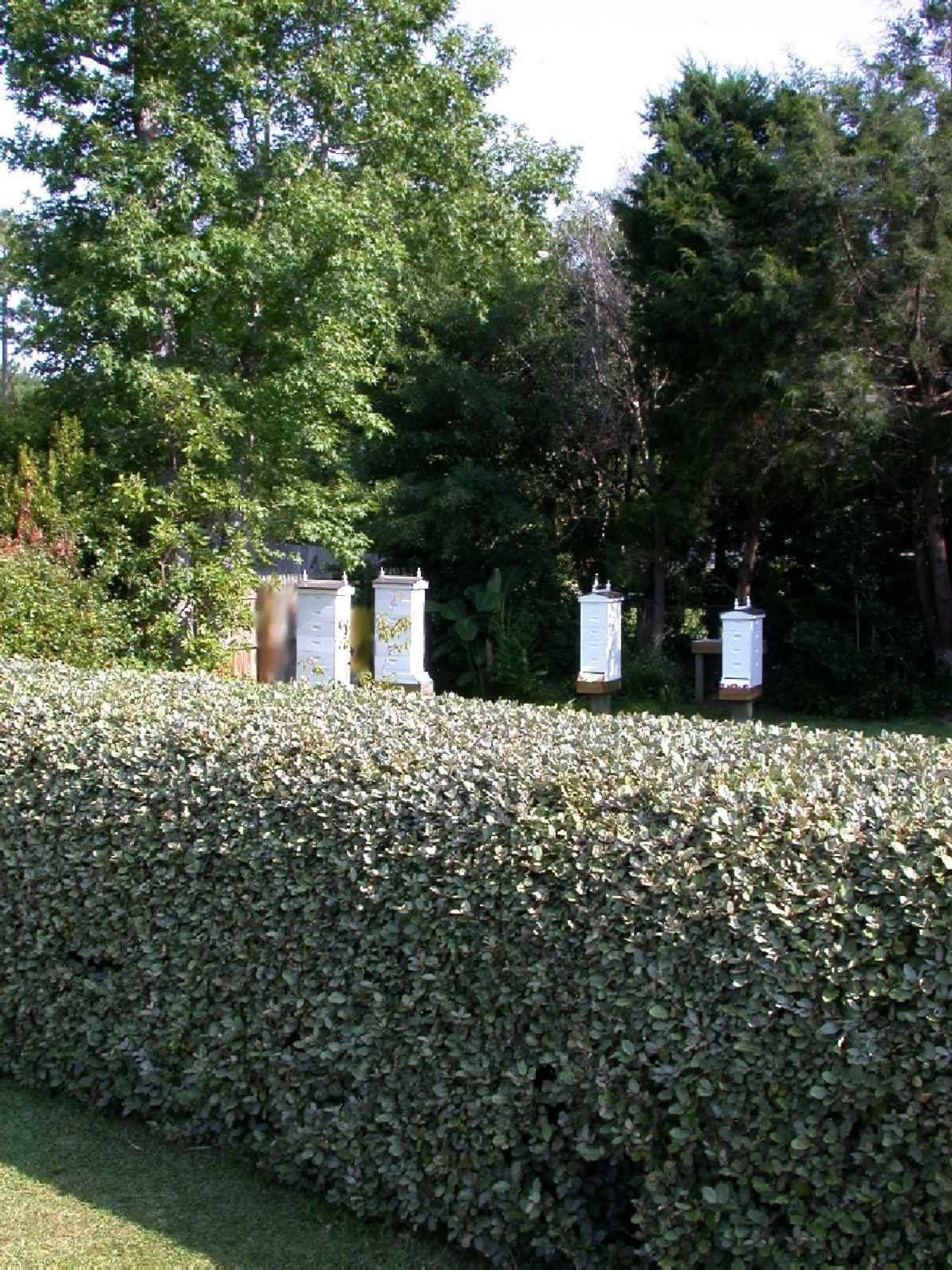
|
| A
Bees - eye view over the six foot hedge and straight on to their
own front porch. Every October these hedges bloom with fragrant,
nectar rich blossoms. photo DML |
|
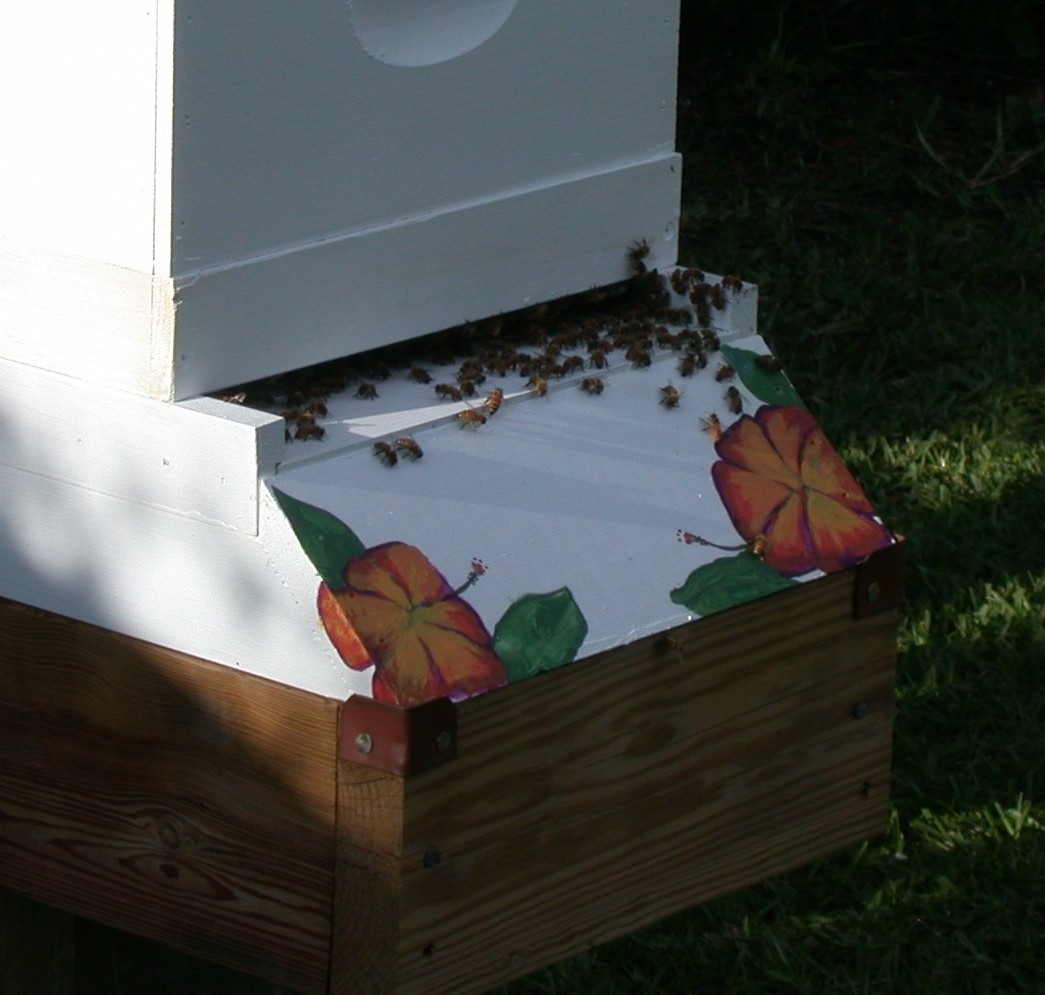
|
| Shown
above, Celeste's front porch with detail of copper cleat holding
hive stand in place. Many folks have asked about the
construction: 6x6 post, buried several feet into the ground
with Sackcrete. The hive stand is thru bolted and pitched
slightly forward, copper cleats at corners to hold porch hive
stand from slipping off. My husband is the architect.
Easy to mow under, high for raccoons etc. Photo detail of
stand construction shown below. Note the 6x6 has been
beveled at the top to allow mites to roll to the
ground. Photo
DML |
|
|
|
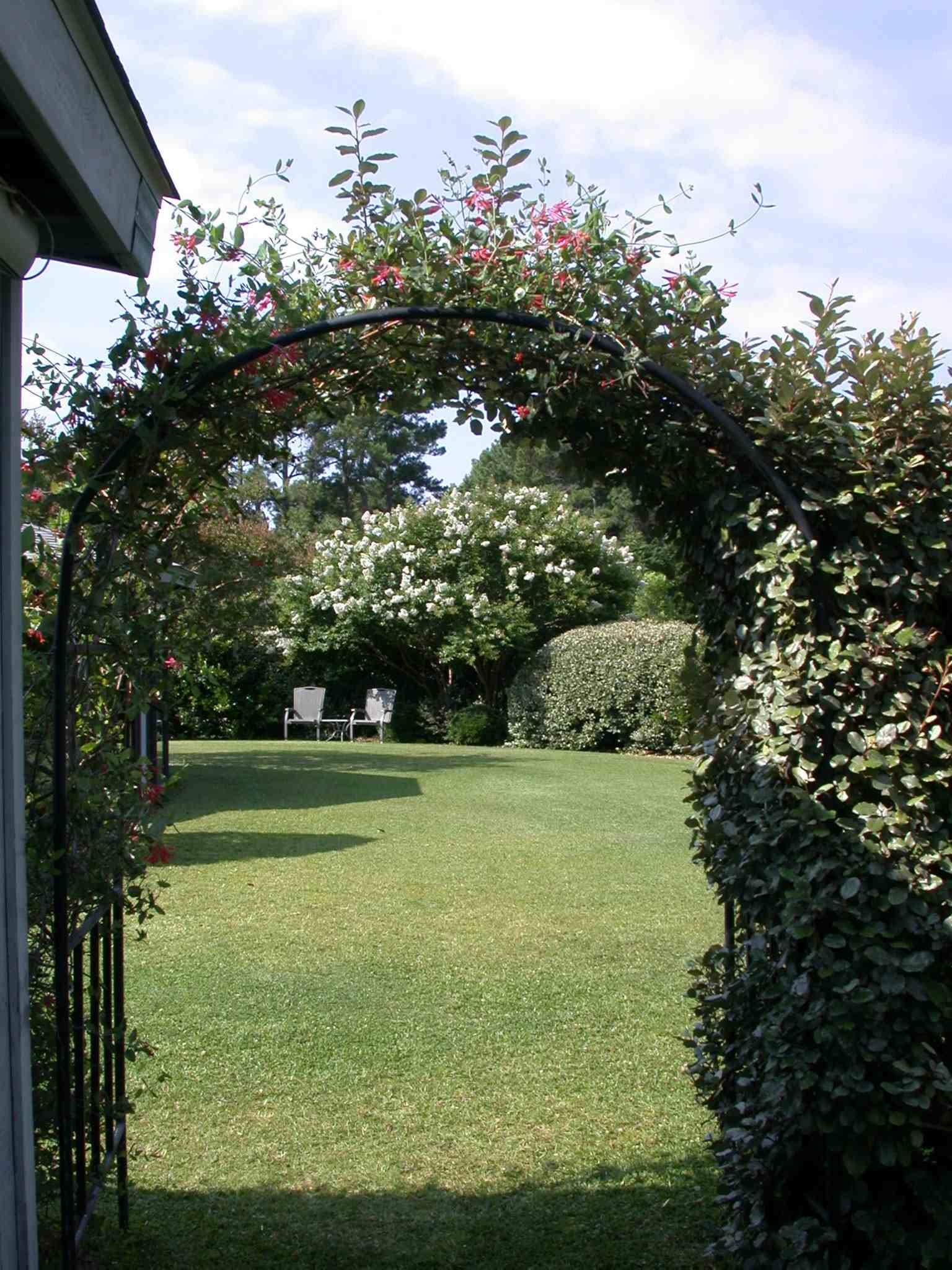
|
|
The path from the Bee Garden....
photo DML
|
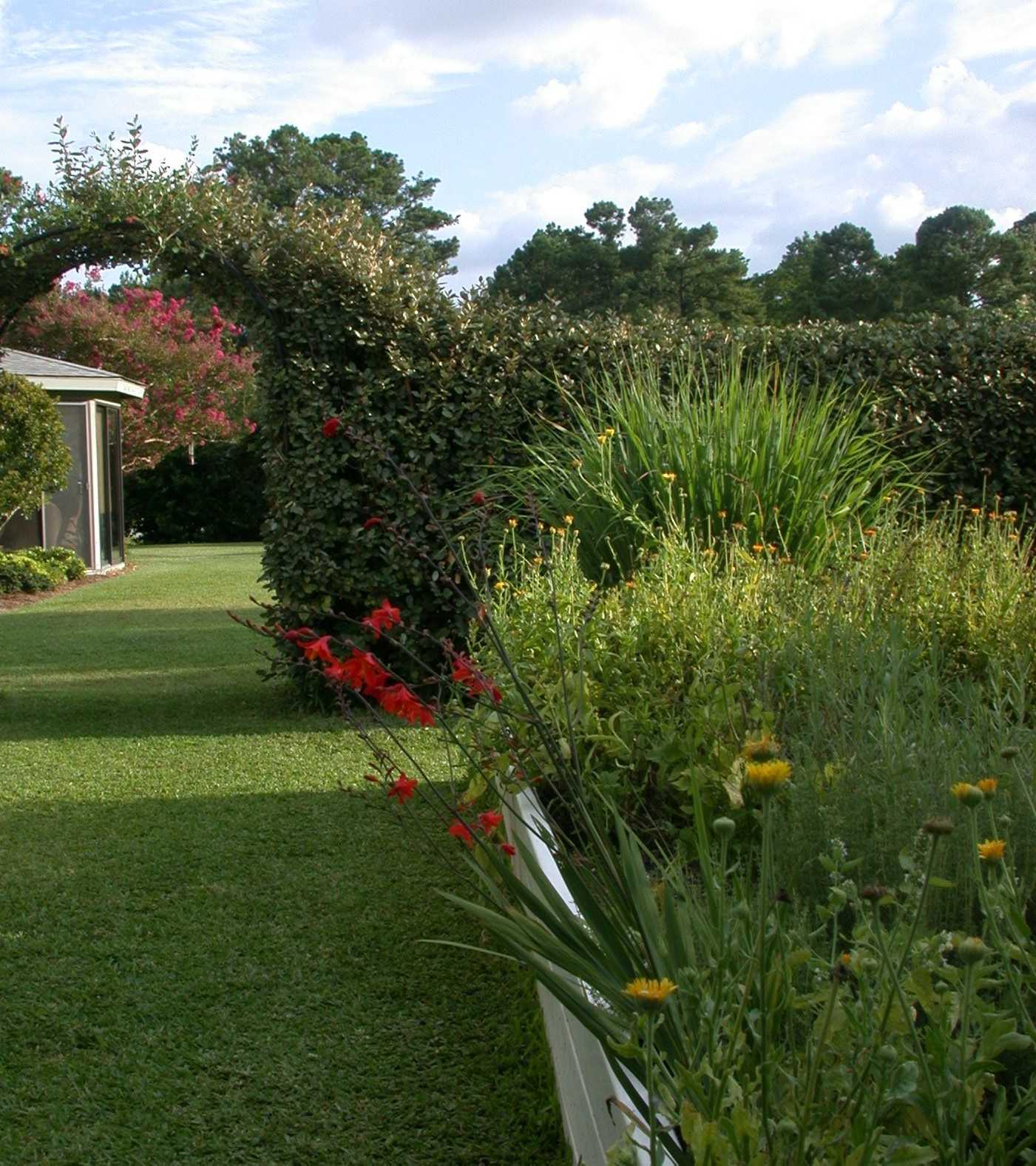
|
|
Crocosmia
blooming July 2007 photo DML
|
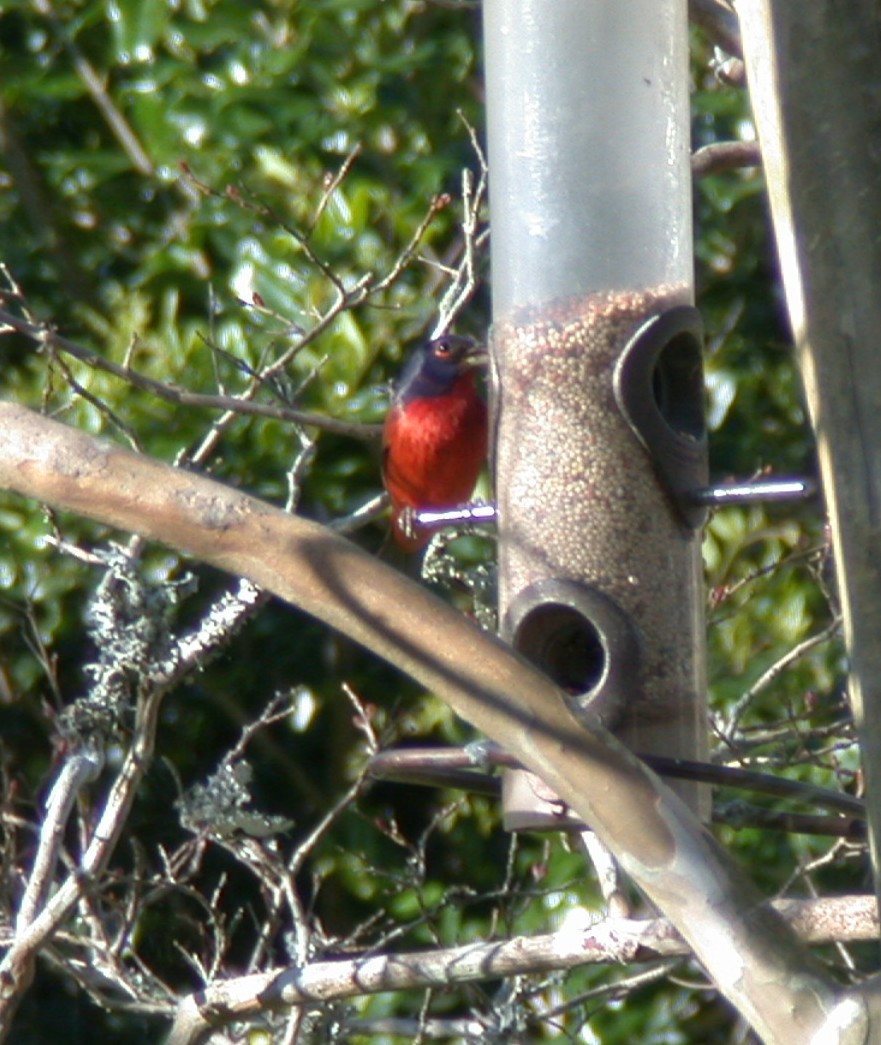
|
|
|
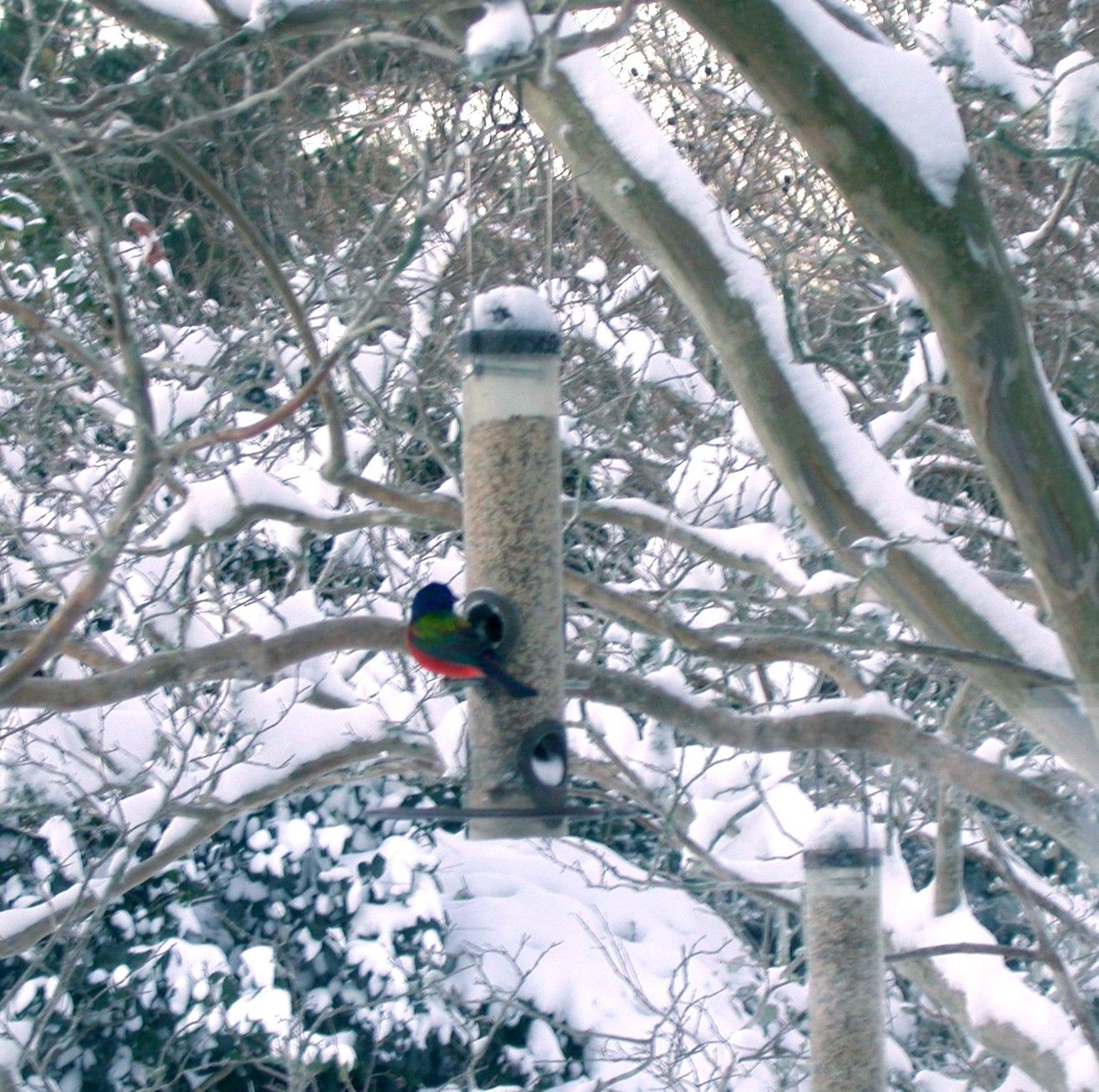
|
|
January
23, 2011. A Painted Bunting at our feeder...in the
snow! Could it be the same fellow we saw last April in the
photo above? We had 6-8 inches of snow yesterday, lovely and
cold! Photo HEL  |
|
|
Above,
Seven birds or more taking a dip, Froggie likes the company. Photo
HEL 09/11/10
|
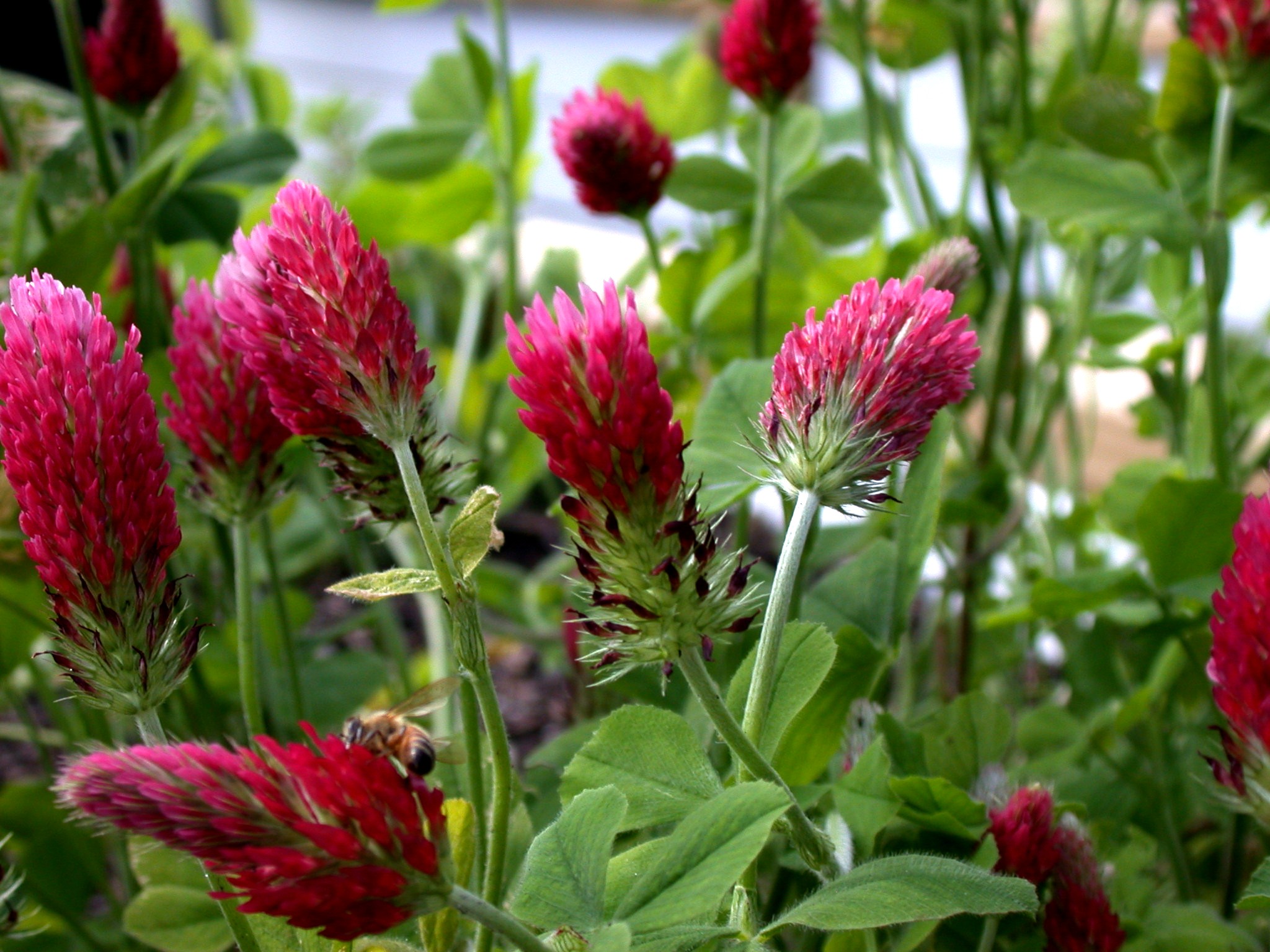
|
|
Honeybee
in Crimson Clover (working lower left blossom) April 2008 photo
DML
|
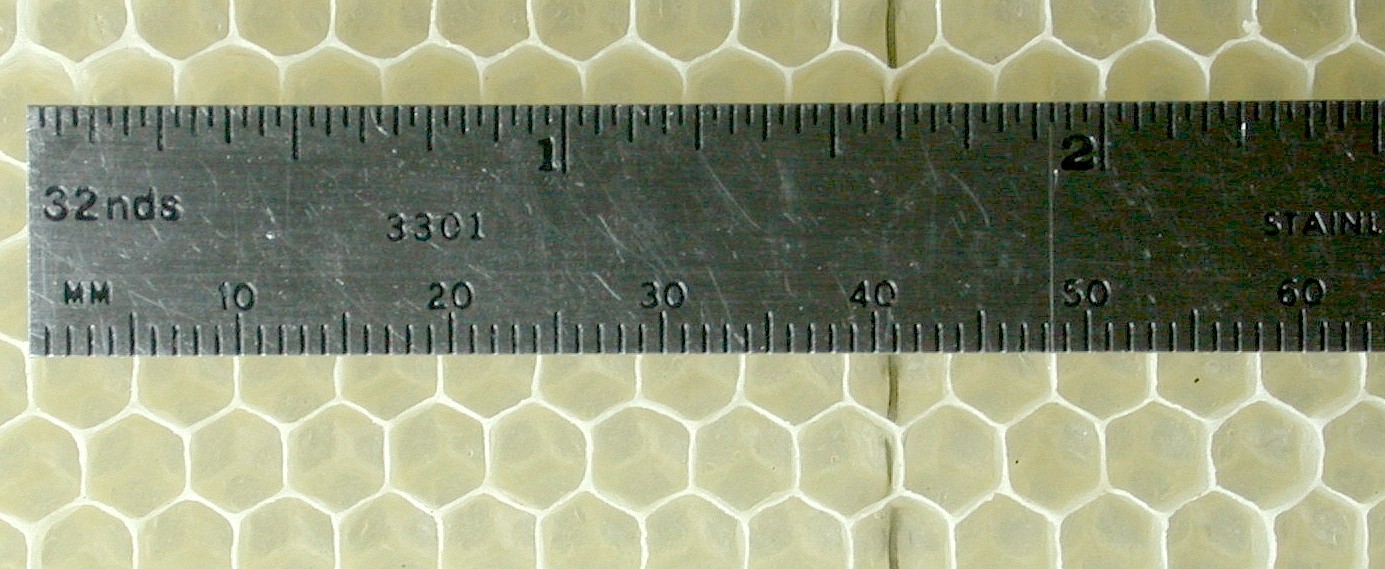
|
|
Drawn Small Cell Honey Comb measuring 4.8 -
4.9mm, this is an extracted frame from Queen Celeste. To calculate, measure
a section ten cells long and divide by ten. October 4, 2007
Celeste is a small cell Queen from 'FatBeeman' Don Kuchenmeister in
Lula GA. photo HEL
|
|
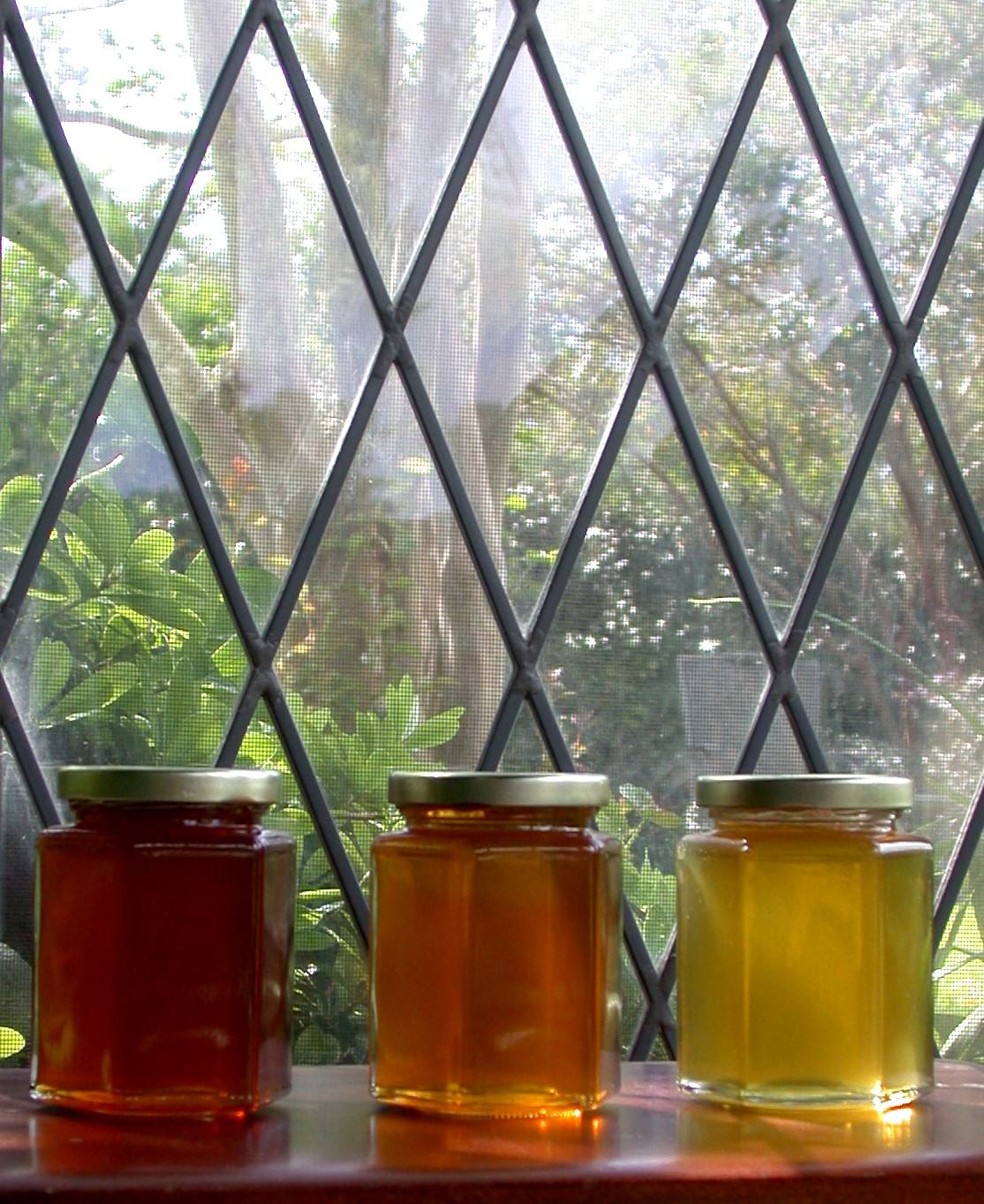
|
|
Harvest
2007 showing the differences in floral nectar sources gathered at different times of the
year. Shown above, from left::
September harvest, July harvest, April harvest. The April honey, seen at right,
and below, is the 2007 NC State
Fair Third Place Ribbon winner in the Senior Honey
Competition, Extracted Honey Light!
photo
DML
|
|

|
|
This April
honey was solely the work of Queen Francesca and her Francescan
daughters! photo
DML
|
|
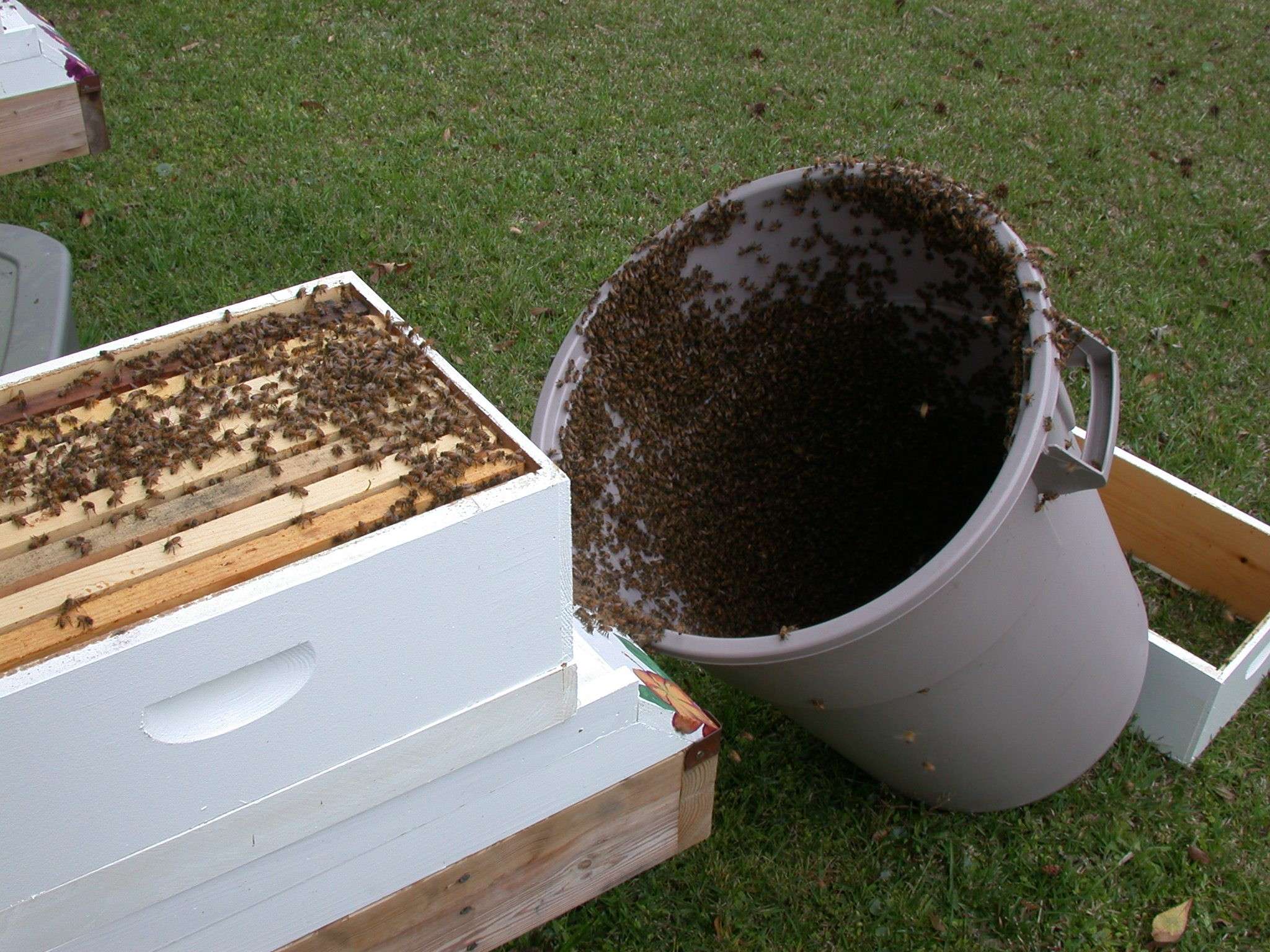
|
|
Shown above, a huge Swarm from
our Queen
Latifa, that I captured in a Wax Myrtle tree April 1, 2008.
I had
placed an empty, fully drawn brood frame in the can before I came up under the
swarm, to knock them in. The Queen settled on the frame, and
it was a piece of cake to transfer her, by placing the frame into her new
home. photo
DML
|
|
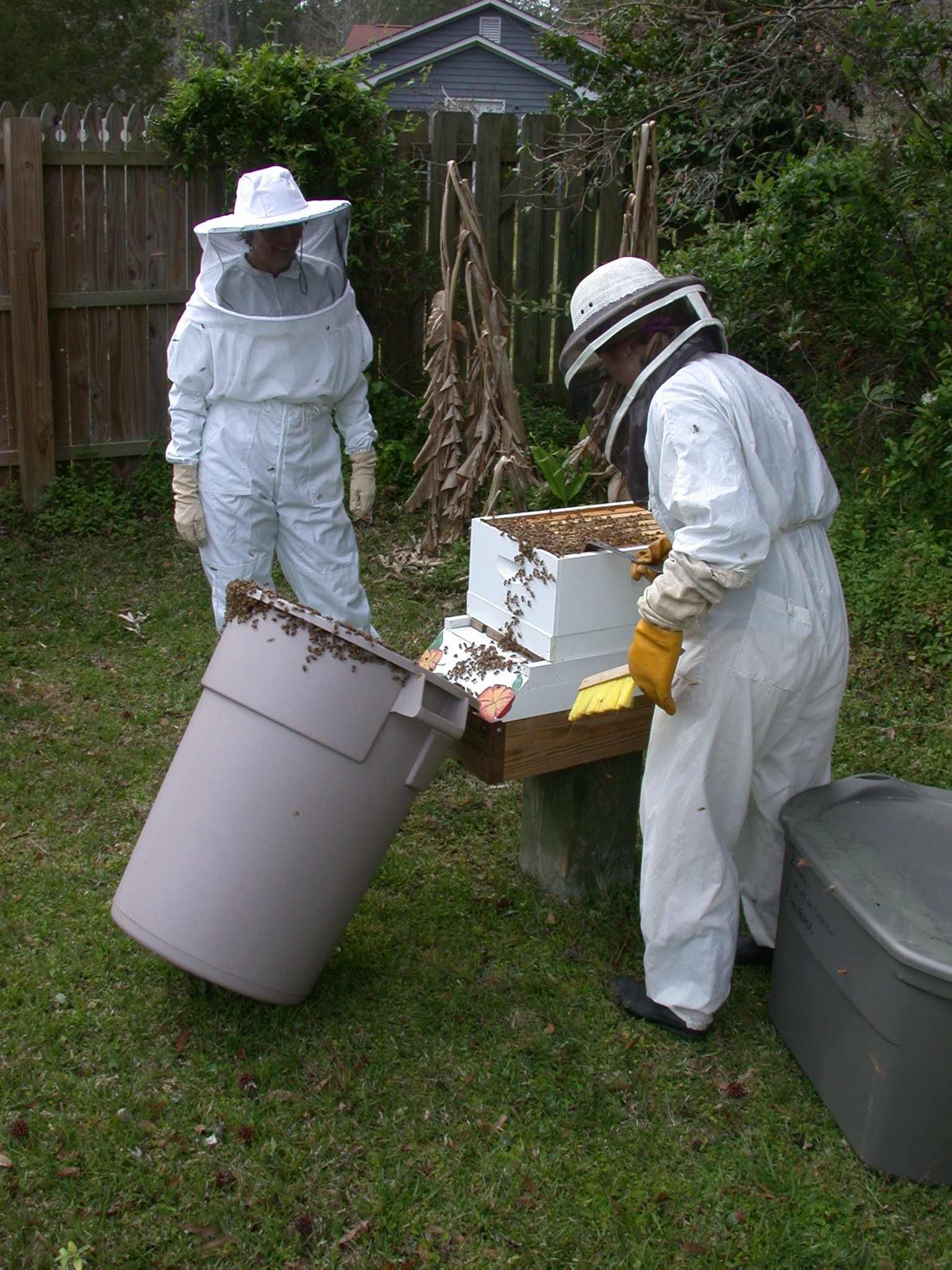
|
|
Anne
E. and I watch the girls march in following their Queen. It
was a heart-warming sight! This swarm was so enormous, a second brood chamber was
added immediately. Because these bees are fully regressed small
cell honeybees from our own colony, I am thrilled! Photo
HEL |
|
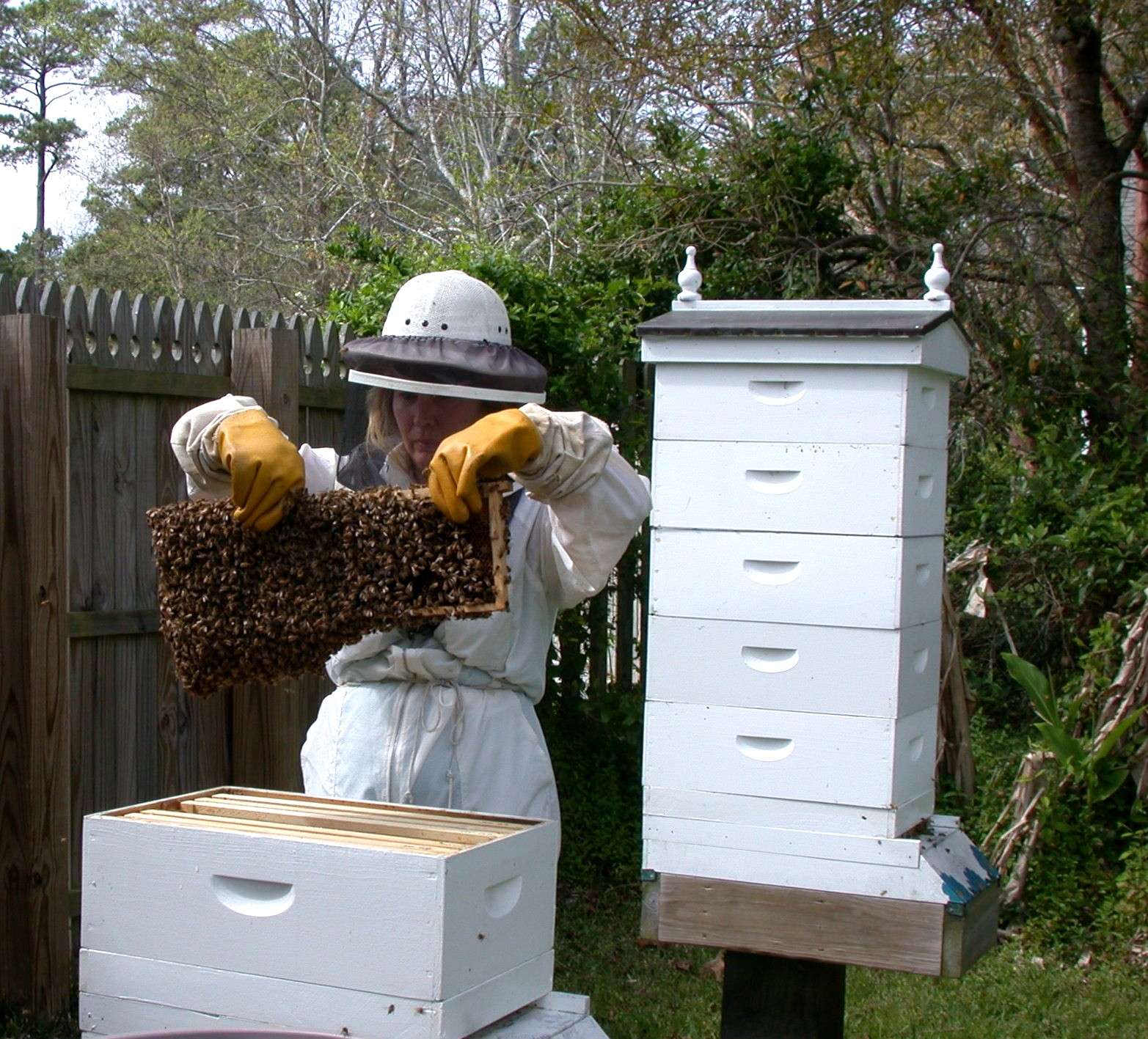
|
|
Yet another
swarm from Queen Latifa, April 11, 2008. Howie caught this one way
up in the Cedar tree...It was a busy year! We captured two
more. We gave a swarm, from Queen Francesca to Mr. D ,
and the other got away. This was a smaller after-swarm, but they
built up nicely! We used the 'frame in the can method' for
this swarm as well. Here I am, moving this fully regressed
small cell family into their new home! photo
HEL |
|
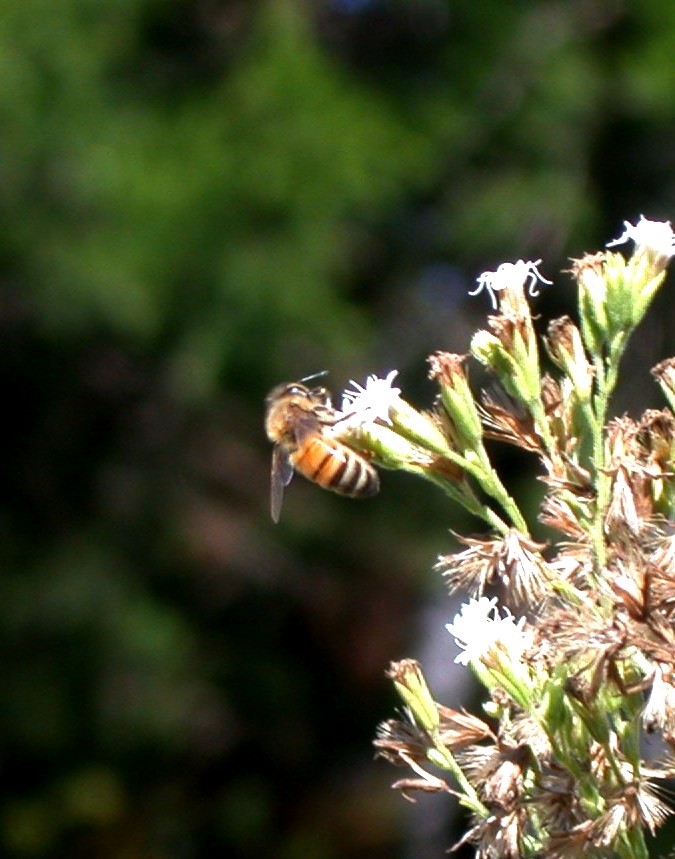
|
|
Honey bee working Stevia blossom October 2007
photo DML
|
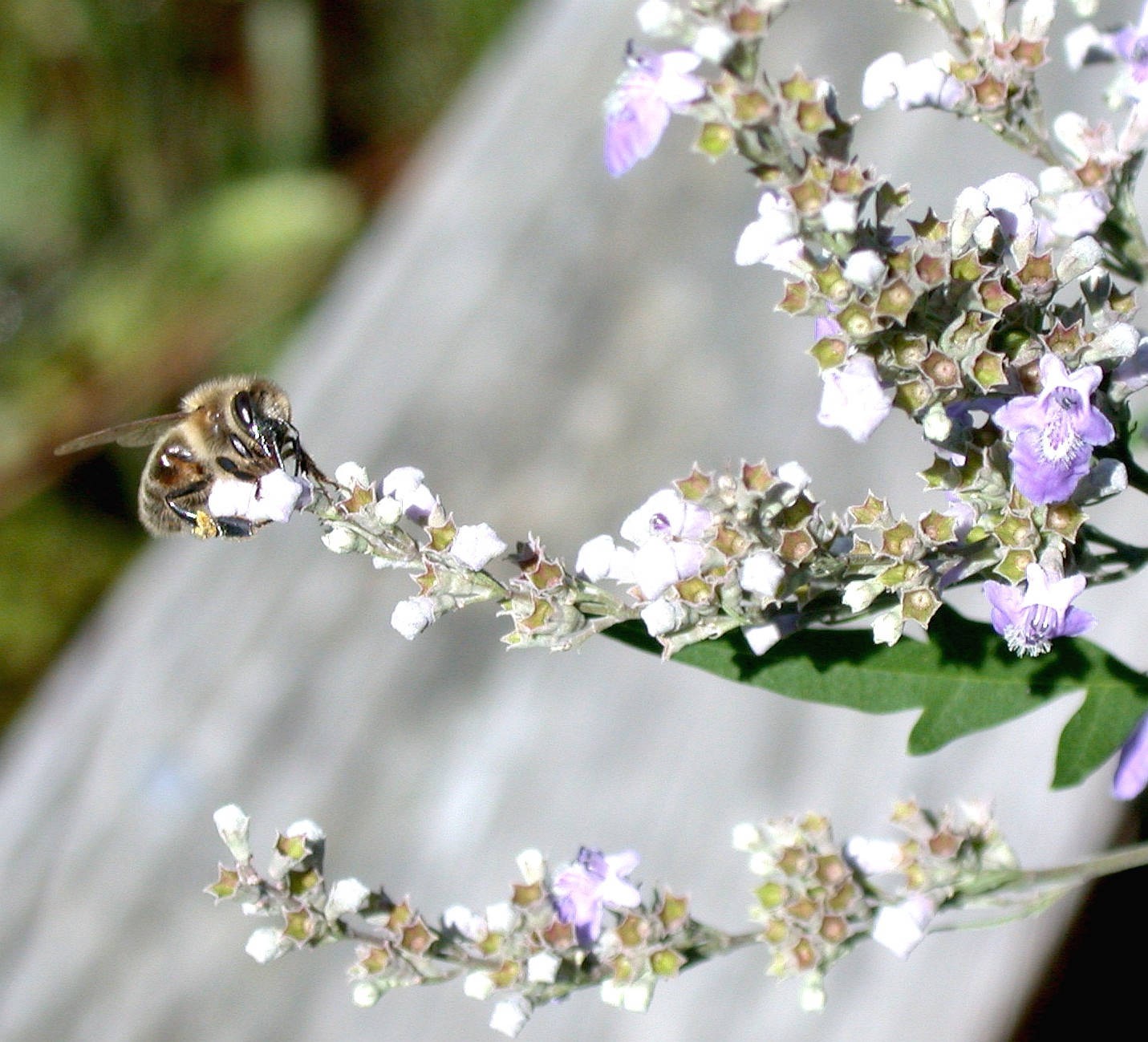
|
|
Honey Bee working Chaste tree blossom Vitex
negundo Sept 2, 2006 photo HEL
|
|
|
|
Palamedes Swallowtail Papilio
palamedes on Hibiscus September 2006
photo
DML
|

|
|
Sourwood Tree Ericaceae
Oxydendrum arboreum
June 2006 photo
DML
|
|
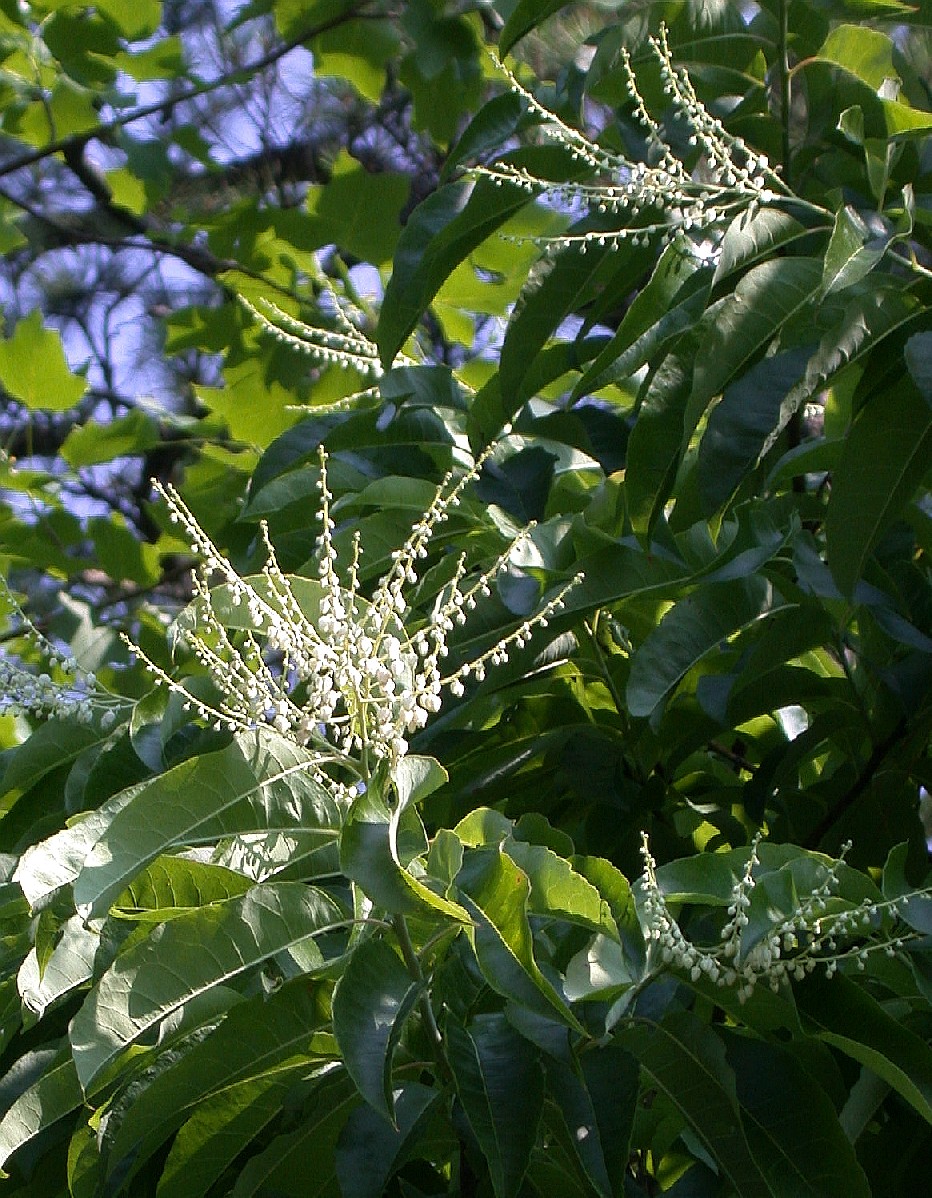
|
|
Detail of Sourwood Blossoms June 2006 photo
DML
|
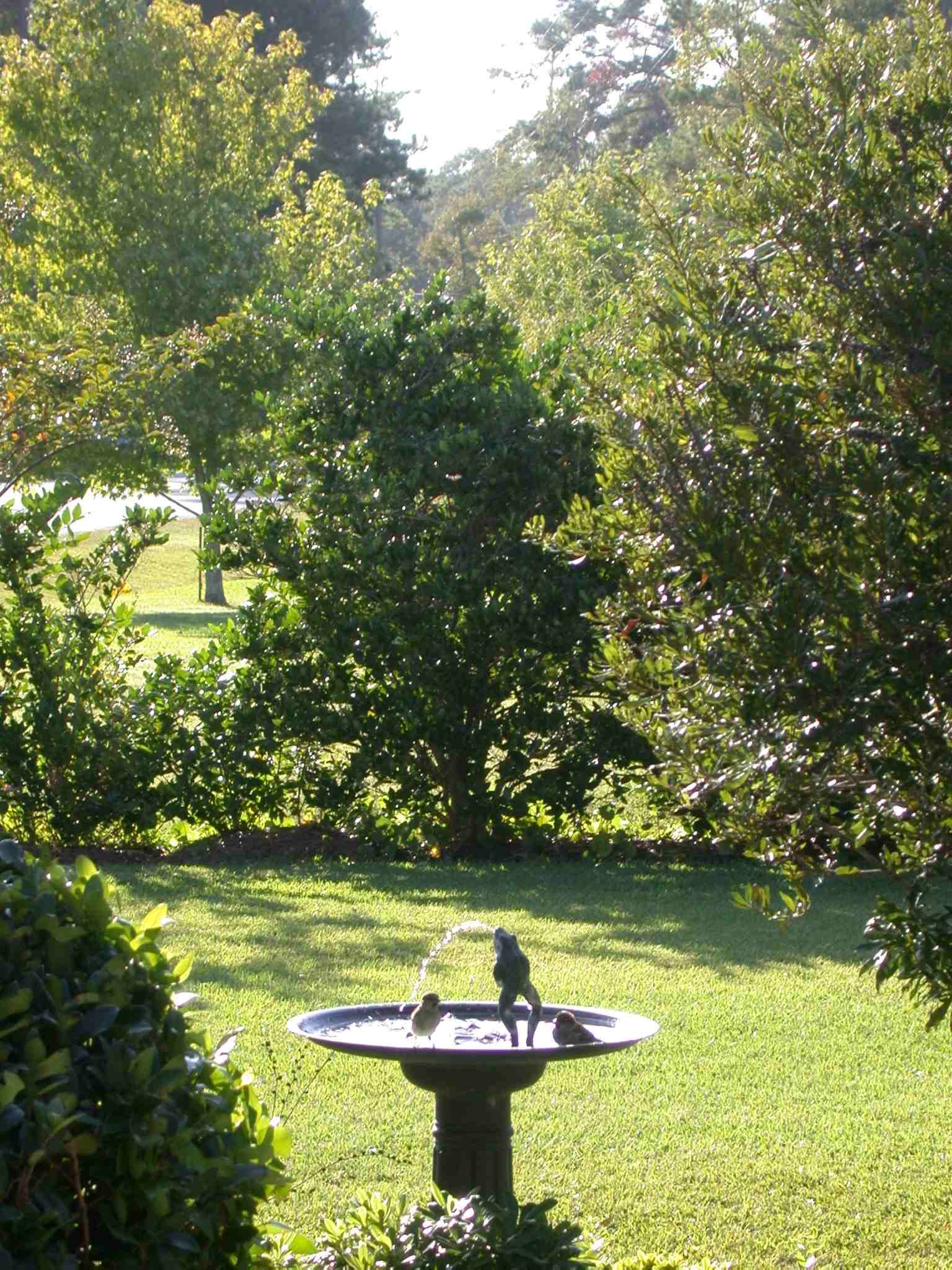 |
|
Our English Froggie fountain with
friends; two Birds bathing Oct 2007 photo DML |
|

|


































